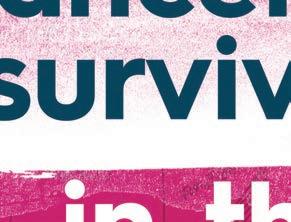




Local of cials, the state of Illinois and even the Cook County Sheriff’s Of ce are working to provide relief for cost-burdened households I PAGE 10

The Chicago-based carrier has boosted ying from its hub
By John Pletz
United Airlines is ying more capacity from O’Hare International Airport than at any time in the past 20 years.
CEO Scott Kirby pushed the throttle coming out of the COVID-19 pandemic in an e ort to regain market share lost over decades to rivals. He’s wooing well-heeled travelers while also taking aim at leisure markets such as Florida, as well as businessheavy routes such as New York, Atlanta and Dallas. United also is adding frequency to small markets, such as Peoria.
As a result, the Chicago-based carrier will be ying 5% more seats to and from O’Hare this month than it did in 2019, before the pandemic hit the U.S., and 17% more than it did a decade ago.
United’s capacity at O’Hare, where it’s the largest carrier, will be up 12% in the fourth quarter from a year ago. San Francisco is the only hub where United will add more seats, according to an
analysis by Raymond James analyst Savanthi Syth.
It’s part of the United Next playbook Kirby and then-CEO Oscar Munoz drew up before the pandemic. It’s been tweaked along the way to deal with shifting travel patterns, including less-frequent business trips, a tight hiring market for pilots and mechanics, higher-than-normal pay increases for the rank-andle, and serious delays in getting new planes.
United’s boost in the number of seats it's ying in and out of Chicago to the highest level since 2004 is a vote of con dence in O’Hare, which is about to spend billions of dollars and several years constructing new terminals that will increase the gate space available for parking aircraft by about 25%.
“It answers skeptics who worried that O’Hare is a mature hub without much growth potential,” says Joe Schwieterman, a DePaul University professor and transportation expert. “ is sets the stage for more international ying at O’Hare. I expect American to grow to protect its market as United kicks into high gear.” American Airlines jump-started
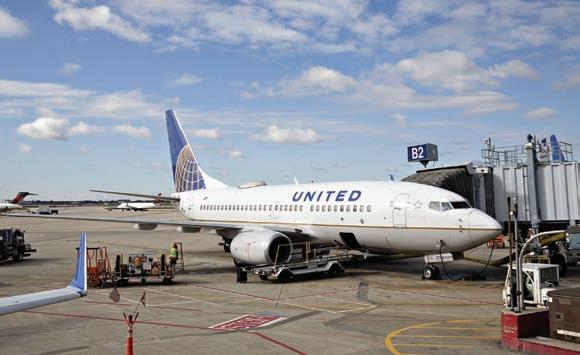
An election meant to democratize the city’s school board has become an insider’s game. PAGE 2

DAN MCGRATH
The White Sox of cially hit rock bottom, and Jerry Reinsdorf nally owns the team he deserves. PAGE 2

What would happen if they held a big election and everyone pretty much yawned — except for special interests with their own agendas, not to mention their own war chests?

That’s one of the bigger questions this fall as Chicagoans prepare to vote for the first time ever on members of the Board of Education.
The shift from a mayoral-appointed body is a big deal, one that some groups have been advocating for for decades. It comes at a time when Chicago
Public Schools issues have been making all kinds of news, be it contentious talks between the board and Chicago Teachers Union, financial strains that threaten insolvency, and a nasty dispute between Mayor Brandon Johnson and schools CEO Pedro Martinez. Yet as early voting begins, the board elections have a near-invisible public profile.
Part of the reason is that voters this year will select only 10 of the 21 board members. Johnson will pick the other 11, who will serve until another election in 2026. That can make for some confusion at the ballot box.
Another reason is that a host of other issues — from the presidential race and City Hall turmoil to the
DAN MCGRATH ON THE BUSINESS OF SPORTS
travails of the Chicago White Sox and Bears — have sucked up the local media oxygen lately, leaving voters who might care about representation on the school board more or less on their own.
A few outlets have tried. Both Chalkbeat Chicago and the Chicago Sun-Times/WBEZ have primers up on their websites that detail solid, if basic, information about the 10 races. But voters will have to do their own homework and seek out such data. And even if they want to vote, they’re going to have to work hard to actually do so.
The school board races are near the bottom of a lengthy November general election ballot, stuck between races for county judge (groan) and judicial retention
questions (double groan).
How come? The Chicago Board of Elections says it followed guidelines set by the Illinois State Board of Elections. The state board says state- or area-wide contests always come first, and that it has received no directive to the contrary from the General Assembly.
So there’s a political vacuum of sorts. You can rest assured the Chicago Teachers Union on one hand and foes of the union (many of them charter school advocates) on the other are doing their best to fill it.
CTU, which bankrolled Johnson’s election campaign and appears to be pulling his strings on CPS and other issues, is running a full slate of candidates, one per
district. Together with an allied group that is financed by CTU, Our Schools Action, the powerful union so far has spent nearly $200,000 promoting its slate, with more and potentially much more on the way, some from an upcoming fundraiser starring American Federation of Teachers President Randi Weingarten.
CTU also has kicked its crack army of precinct election workers into high gear. Interestingly, the Chicago Federation of Labor is with CTU in six of those 10 races, but is backing other candidates in the 4th and 9th districts and is neutral in two others, the 2nd and 10th. Lining up on the other side are
See HINZ on Page 6
Most, if not all, of the neighborhood men who sat on their front porch with transistor radios and quarts of Hamm’s beer for those Whitey Ford-Billy Pierce/ Yankees-White Sox showdowns from long ago are gone now. It was a South Side thing.
And probably a good thing that they’re gone, spared the indignity of seeing their beloved ball team sink to depths of bad they never could have imagined.

Dan McGrath
How bad? With a 4-1 loss to the Detroit Tigers on Sept. 27, the Sox set the modernday MLB record for losses in a season with 121. They eclipsed the dubious achievement of the 1962 New York Mets, who lost 120 in their first year of existence as an expansion team, with no farm system and a roster made up entirely of other teams’ castoffs.
The White Sox, in business since 1901, have no such excuse. And it had been inevitable throughout this hideous season.
My folks are buried in Holy Sepulchre Cemetery in Alsip, where I paid them a visit over Thanksgiving in 2005. Four weeks earlier, the White Sox had secured their first World Series title in 88 years with a four-game sweep of Houston’s Astros, completing a dizzying 11-1 run through the postseason.
Half or more of the headstones in the sprawling, sacred burial ground were decorated with some type of White Sox memorabilia — a pennant, a button, a photo, a cap, a banner newspaper headline, proudly placed there by nostalgic fans longing to share the occasion with loved ones who
hadn’t lived to see it.
This, I thought, was big. I called the Chicago Tribune, where I worked at the time, and asked for a photographer to come out and take pictures, which made for a nice Thanksgiving Day spread.
I spent 40-plus years in newspapers, involved with more stories than I could hope to recall. And though I’ve been out of the game for a while, I’m occasionally asked which of those stories was most memorable.
It doesn’t require much deliberation: the 2005 White Sox. Because of what they meant to so many people I care about.
It’s a South Side thing.
The White Sox are as South Side as potholes and political favors, yet curiously revered. Jerry Reinsdorf doesn’t get that and never has. If he did, he would never have allowed this proud, feisty, underdog franchise to wallow in such pitiful misery as we have witnessed this year.
Reinsdorf doesn’t get the South Side and never has. If he did, he wouldn’t have brandished the threat of a move to St. Petersburg as leverage for a new ballpark, no matter how decrepit the old Comiskey Park had become.
You don’t want us? Why should we want you?
It’s a South Side thing.
And, when he did get a new park, he wouldn’t have complained about being coerced into keeping it in Bridgeport when his preferred site in Addison would have drawn millions more customers.
Not many would have come from the South Side, Mr. Chairman. Those folks don’t like to be told where to go.
Nor do they like to be told what to do, which is why the clueless TV announcer’s blatantly contrived order to “Stand up, South
Side!” was met with such roll-ofthe-eyes derision.
The Sox let the clever, observant and smoothly polished Jason Benetti go and replaced him with this sadly overmatched John Schriffen? As sage TV critic Phil Rosenthal has suggested, there might be no better example of franchise mismanagement. The games are as unwatchable on TV as they are in person.
Of course, Reinsdorf would tell us it’s the fans’ own fault for not turning out in greater numbers.
The Athletic recently produced a deep, thoroughly reported dive into
how the White Sox came to be this bad. With all the missteps in one place, what emerges is a jarringly unflattering portrait of Reinsdorf and his small-market mentality. He still loves the game, but passion doesn’t confer wisdom. He was loath to embrace analytics and other technological advances, so much of the knowledge on which he prides himself is outdated — the game has passed him by. But he’s still an inveterate meddler, and let’s say hello again to Tony La Russa.
Finally, as this mudhole of a season comes to a close, a season
that has been embarrassing and insulting to those grimly loyal South Siders who live and die with the White Sox, the chairman is agitating for another new ballpark. For this mess? Reinsdorf leads the league in chutzpah. You’ve got to give him that.
A three-game sweep of the comparably inept, mailing-it-in Angels changed nothing. It’s time for him to sell.
Crain’s contributor Dan McGrath is president of Leo High School in Chicago and a former Chicago Tribune sports editor.


“It’s the partnership that matters.”
BART VITTORI – CHIEF FINANCIAL OFFICER | MEATS BY LINZ


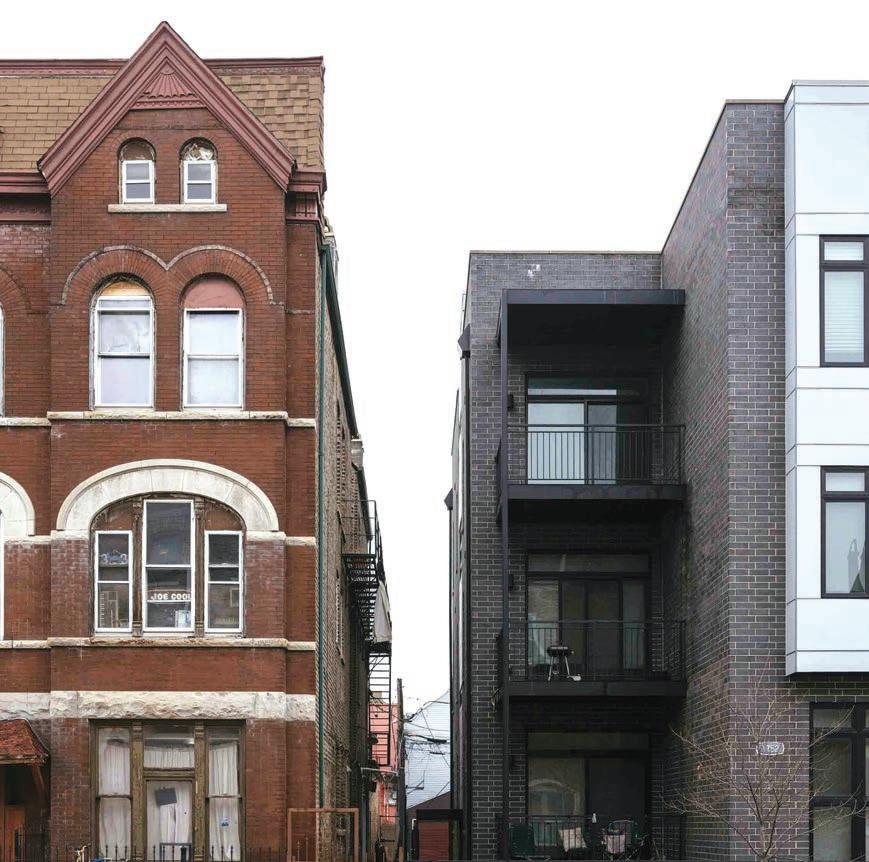
renters in hot-spot neighborhoods on chicago’s North and West sides will gain a measure of control over who buys the buildings they live in when the ordinance soon takes effect I
Renters in some North and West Side neighborhoods will soon have the rare power to control who buys the buildings they live in, under the city's latest tool for cooling off gentrification hot spots.
In parts of Humboldt Park, West Town, Logan Square, Pilsen and Avondale, renters in many buildings will have the right of first refusal over any sale contract their building owner signs with a potential buyer.
By Dennis Rodkin
Under the ordinance, passed by the Chicago City Council Sept. 17 and taking effect when it’s published by the city clerk Oct. 9, renters have the right to match a buyer’s offer and buy the building, pass their right to buy on to another party, or approve the sale going through as
the seller has lined it up. Covering 6 square miles, the measure quadruples the portion of the 234-square-mile city where renters have a right of first refusal. In a 2020 plan to protect existing Woodlawn residents from being pushed out by gentrification sparked by the Obama Center, tenants in that 2-square-mile neighborhood also secured a right of first refusal.
A survey of industry professionals showed where they’d like to see resources dedicated if they were not earmarked for stadiums
By Danny Ecker
A public discussion about whether taxpayers should chip in close to $1 billion to help the Chicago Bears or Chicago White Sox build new stadiums in the city has prompted a question among the local commercial real estate community: Where would you want that money invested instead?
That was the exercise put before about 300 Chicago-area real estate pros over the summer by the Urban Land Institute and the Real Estate Center at DePaul University as part of its annual Chicago real estate midyear sentiment report.
A field of developers, investors, brokers, financial partners, real estate attorneys and other industry stakeholders were asked to choose from a list of where they'd want to see such resources dedicated if they were not earmarked to subsidize either recent proposal from the pro sports teams for new venues.
violent crime in the city have become a big hurdle keeping some investors from putting money into local real estate since the onset of the public health crisis.
Mayor Brandon Johnson — who has publicly championed the Bears' pitch for $900 million in upfront public money for a new lakefront stadium — has also pledged to transform the city's approach to policing, hoping a more progressive philosophy will help fight crime and yield safer streets.
The top answer, selected by 42% of respondents: more funding for police.
The top answer, selected by 42% of respondents: more funding for police.
Here are the other results from the survey:
The responses send a message to political leaders about public safety improvements that real estate leaders want to see as Chicago continues its recovery from the COVID-19 pandemic. Real and perceived issues with
The City Council approved a nearly $2 billion budget for the Chicago Police Department last year. Johnson recently said the city's police and fire departments will be exempt from a citywide hiring freeze as the mayor tries to close a $982 million budget shortfall for 2025.
“The Chicago real estate community isn’t ready to be in the vanguard of a defund the police strategy,” DePaul Real Estate Center Director Reagan Pratt said in a statement on the report, which is set to be discussed at an event tomorrow at 110 N. Wacker Drive. “Given the short- and long-term Chicago area challenges identified in the survey, it is little surprise that a primary focus among CRE professionals is to attack real problems or
UChicago’s $100 million donation is among its largest ever
the school said the gift will support ‘leadership on the principles and practice of free expression’
By Brandon Dupré
The University of Chicago landed a $100 million donation to support free speech, making the gift one of the largest in the elite college’s history.
The gift, whose benefactor remains anonymous, is the school’s eighth nine-figure donation, according to the university.
The largest donation ever was $300 million from David Booth,
founder and chairman of investment firm Dimensional Fund Advisors, to the school’s business program, which was renamed in his honor. Ken Griffin owns the title of second-largest donation to the university, giving $125 million to the economics school, which was renamed after him.
Here’s the complete list of nine-figure donations:
2007: $100 million from an anonymous donor for under-
graduate financial aid
2008: $300 million from David G. Booth for the Booth School of Business
2015: $100 million from the Pearson family for study and resolution of global conflicts
2017: $100 million from the Duchossois family for science and medicine
2017: $125 million from Ken Griffin for the Kenneth C. Griffin Department of Economics
2019: $100 million from the Pritzker Foundation for molecular
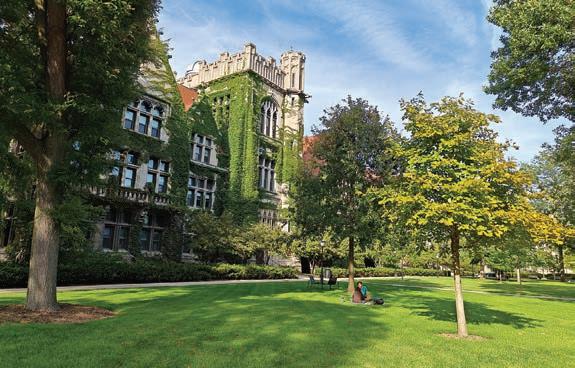
It marks one of the largest new suburban leases completed since the start of the COVID-19 pandemic
By Danny Ecker
As Medline Industries adds to its office footprint downtown, it's bulking up on workspace in the suburbs, too.
The Northfield-based medical supply giant has signed a new lease for 210,000 square feet at 2375 Waterview Drive in Northbrook, the company announced. Marking one of the largest new suburban office leases completed since the start of the COVID-19 pandemic, Medline will occupy almost all of one building in the two-building complex owned by the U.S. arm of Japanese drugmaker Astellas Pharmaceutical.
The dramatic expansion 4 miles west of Medline's Northfield headquarters comes as the company more than triples its office space downtown at the Merchandise Mart. New York-based Vornado Realty Trust, which owns the Mart, announced on Sept. 18 that Medline had signed on for a 110,000-square-foot expansion in the building.
In a separate statement, Medline also announced it was planting its flag in Northbrook and that more than 1,000 of its local employees will relocate their workspace to that office or the Mart "with room for incremental growth."
“As Medline continues to grow, the company is committed to ensuring it has the space needed for employees to thrive, collaborate and feel connected to the culture that has sustained us through the years," Medline Vice President of Real Estate and Construction Kate Slattery said in the statement.
With the 370,000 square feet of

new downtown and suburban office space, Medline said its real estate footprint in the Chicago area is now 3.8 million square feet. That includes industrial facilities, such as the 1.4 millionsquare-foot distribution center it opened in far north suburban Grayslake in 2022.
It's unclear whether Medline will be vacating any local office space elsewhere in the Chicago area as part of the Northbrook office deal. The company also has offices in north suburban Mundelein and Libertyville.
Medline said in the statement
that it has grown its headcount in the Chicago area by 33% over the past five years to nearly 6,100 employees. The company today has over 39,000 employees worldwide and does business in more than 100 countries and territories.
Medline, whose products include medical gloves, gowns and exam tables used by hospitals and doctors, generated more than $21 billion in sales last year. It was sold to private-equity firms Blackstone, Carlyle Group and Hellman & Friedman in 2021 and has reportedly been ex-
ploring an initial public offering that could value the company at as much as $50 billion, according to Bloomberg.
The Northbrook lease is a win for Astellas, which built its headquarters complex in Northbrook in 2012 but occupies only part of one of the buildings today. Astellas in recent years has been hunting for tenants to move into empty space at the property and inked a deal last year with chemical company CF Industries to move its headquarters there.
An Astellas spokeswoman said in a statement to Crain's that the
company has reduced its office space in Northbrook "based on average office attendance figures" but that it "remains committed to maintaining operations" in the suburb.
"While Astellas will continue to occupy part of the facility, we have decided to lease the remaining space to a new tenant in order to support the local economy," the statement said. Medline's lease is among the largest leases completed in the Chicago suburbs over the past few years, an outlier at a time when many companies are embracing the remote work movement and shrinking their workspace footprints.
The deal is similar in size to a recent 214,000-square-foot sublease signed by fleet management company Wheels at the Zurich North America headquarters in Schaumburg. That marked the biggest office deal in the Chicago suburbs since Ace Hardware's 2022 lease for the main office building on the former McDonald's headquarters campus in Oak Brook.
The office vacancy rate in the Chicago suburbs topped 31% midway through the year and has hit new record highs for 14 consecutive quarters, according to data from brokerage Jones Lang LaSalle. Companies have collectively cut back on nearly 4 million square feet of office space in the Chicago suburbs since the beginning of 2020, roughly 8% more than the suburban office space reduction from the beginning of 2008 to the end of 2010 when the great financial crisis hammered the market.
By Rachel Herzog
A high-end diamond retailer appears to be planning its first Chicago location on the city’s ritziest shopping strip.
Lugano Diamonds has a deal to take up 100-104 E. Oak St., according to sources familiar with the property. The space has been occupied by two recently shuttered shops and a soon-to-be-closed restaurant.
Adjacent to North Michigan Avenue and home to luxury brands and upscale boutiques, Oak Street hasn’t struggled with retail vacancy the way Chicago’s other shopping districts have. Local retail brokerage Stone Real Estate estimates the strip’s vacancy at less than 10%, with just three storefronts that have available ground-level space.
“It’s fundamentally luxury
and contemporary brands having their moment, and those brands either require wealthy customers or customers who are willing to spend,” Stone Principal John Vance said of the strength of the Gold Coast shopping corridor. Vance is not involved in the Lugano deal.
Lugano didn’t respond to requests for comment. It’s possible the Chicago location will be a similar concept to the brand’s “salons” in other cities that offer a luxurious shopping experience. Based in Newport Beach, Calif., the retailer also has U.S. locations in Aspen, Colo.; Greenwich, Conn.; Houston; Ocala, Fla.; Palm Beach, Fla.; and Washington, D.C.; and opened its first international location in London in April, according to its website.
French fashion brands Maje and Sandro have shuttered their
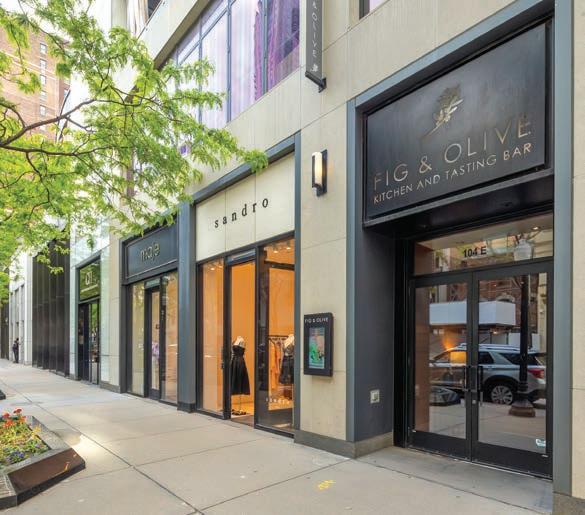
stores at 100 and 102 E. Oak St., respectively, according to messages posted at those locations. Mediterranean restaurant Fig &
Olive is closing its location at 104 E. Oak St. after Oct. 6, a spokesperson for the restaurant confirms. The restaurant occu-
pies about 12,400 square feet of second- and third-level space, while the shops took up about 4,700 total.
Neither Fig & Olive nor the boutiques’ parent company, SMCP Group, responded to requests for comment from Crain’s.
Both boutiques and the restaurant opened their doors in 2014 and were among the first tenants when the 54,000square-foot building, formerly the Esquire Theater, was redeveloped and opened as retail space.
A venture of Miami-based Ponte Gadea USA, the real estate investment business of Spanish billionaire Amancio Ortega, owns the building, which spans 58-104 E. Oak St., according to property records. The firm didn’t respond to a request for comment.
Jones Lang LaSalle brokers Peter Caruso and Jose Gonzalez represented the landlord in the deal.

the space — once the home of Maxim’s restaurant and a magnet for celebrities — is selling old-school elegance to its members in the form of an a ward-winning chef on staff I
By Ally Marotti
The subterranean Astor Club in the Gold Coast is dripping with old-school elegance. There are 24-karat gold flecks in the floors, plush red chairs in the lounge, a pink marble sink in the bathroom. Dozens of vintage wine bottles are on display in the entry, and a 1936 ivory-keyed Steinway sits in the lounge. Member lockers have names on the placards that are recognizable enough that Crain's had to agree not to print them.
As a members-only spot, the Astor Club’s ethos is centered on exclusivity. Now the owners, who opened the spot just over a year ago, are piloting a new theory: Can their members taste exclusivity, too?
The test began with the hiring of Michelin-starred Chef Trevor Teich, who took over the kitchen in late June. Teich rolled out a new menu and is preparing special events for members, such as a tasting menu, wine tastings and more. So far, his changes — and his gravitas — are appealing to members. Membership has increased since he started. And, perhaps more notably, members are spending about 40% more each time they visit.
“Many clubs in the city haven’t, I would say, really focused on the food,” said Adam Bilter, who bought the space with his wife, Victoria, in 2022. “But because we’re literally an old restaurant space — a pretty old, famous restaurant space — we always knew that that was going to be a focus.”
Astor Club exists in the space at 24 E. Goethe St. that for two decades was Maxim’s. The spot opened in December 1963 in the basement of what was then a hotel. It was, by many accounts, the place to be. There were parties, near-nightly performances, and eventually, discos. There were celebrities, from Audrey Hepburn to The Beatles. Framed photos on the wall show glimpses of those days.
Maxim’s was a sister of the Parisian mainstay, Maxim’s de Paris, which has been open since 1893 in the French capital and has drawn customers such as Ernest Hemingway. The Chicago iteration’s Art Nouveau decor mir-
From Page 2
two groups: Affiliates of the Illinois Network of Charter Schools, which reportedly has up to $3 million to spend if it so chooses; and a new organization, The Urban Center, founded by former Latino charter school operator Juan Rangel with lots of help from former CPS chief and ex-mayoral hopeful Paul Vallas.
The Urban Center's political action and independent expendi-

rored that of its French sibling, with deep red seating, over-thetop trim, nature-inspired accents and gold fixtures. The Bilters bought the space for $680,000 from the city, which had used it as an event venue after Maxim’s closed. It sat vacant for about a decade before the Bilters came along and sank more than $1 million into fixing it up.
Walking in now, one is transported back to the Belle Epoque.
The Bilters worked to keep as many features as possible. A piano in the entry says “Maxim’s” just above Middle C. Those vintage wine bottles on display were drained half a century ago. The white tablecloths in the dining room stand stark against the original deep red carpet, booths and wallpaper. The light fixtures are the same, and on the wall hang flourished gold “M’s,” for Maxim’s.
‘Out of a James Bond film’
“It’s out of a James Bond film that didn’t get made,” said Teich on a recent afternoon, looking into the dining room. “It’s incredible to do the food that would be here, with a modern lens.”
When Teich was hired, he went to Myopic Books in Wicker Park and bought French cookbooks
tures committees so far have raised roughly $700,000 for board races with more potentially on the way. Included are $100,000 each from Morningstar’s Joe Mansueto and Madison Dearborn co-founder James Perry, and $50,000 each from mergers and acquisitions lawyer Charles Mulroy and Residco exec Vince Kolber.
The Urban Center has its own candidates in nine of the 10 districts. The charter network says it’s still deciding. So is a third waiting in the wings that’s headed by former Richard M. Daley and
from the 1960s for inspiration. The resulting menu is old-school French with a modern touch that matches the decadence of the place. Appetizers include a seafood tower ($71 per person), salmon rillettes ($18) and deviled eggs ($5 each.) There’s Vichyssoise soup ($12), or diners can pay $27 and get scallops and caviar added. There’s a fork and knife Caesar salad ($18) and avocado Louie ($20).
Three items were on Maxim’s original menu: onion soup ($12), Sole Meuniere ($42) and Tournedos Rossini ($65). The lobster pot pie ($26) is a holdover from Teich’s previous restaurant, Claudia. Other entrees include steak frites ($60) and two burger options, plus a carbonara ($26) that harkens to the Bilters' days living in Italy.
The poulet roti pour deux ($85) is prepared tableside. Teich pipes chicken mousse under the chicken skin, adds herbs, then takes it back to the kitchen to be carved up. The result is served with farro and corn risotto.
“It’s over-the-top presentation,” he said. “It’s fun to do the showy stuff in a place like this, where they’re expecting fire.”
Teich said the menu is off to a good start, though he’s still gathering data on what’s working. The
Rahm Emanuel aide Mike Ruemmler. Among founders of that group is Civic Committee chief Derek Douglas.
Amid all of this money-raising is a little Chicago-style political intrigue. For instance, among those running are one Democratic ward committeeman and the wife of another. And no one who knows wants to talk about how the CTU candidate in one district suddenly enjoyed a clear path to victory, after his only opponent abruptly withdrew.
“What’s at stake is the future of

and inflation set in. Some Chicago restaurant customers are cutting back. It’s been a blow to the already low-margin industry, and the economics of running a restaurant have changed in recent years. Claudia cost $20,000 a month just to turn on, Teich said, not including labor and the food, which are typically the two biggest line items.
prime beef short rib Wellington for two ($125) is the star item, and the deviled eggs are quickly becoming a favorite, too.
“We sell tons and tons of deviled eggs with caviar on top,” he said. “While you figure out what you want to eat, a glass of bubbles and a couple of those will get you in the mood.”
Members-only spots like Astor Club offer luxury, and people join for the exclusivity, said Alexander Chernev, a marketing professor at Northwestern University’s Kellogg School of Management. Having a Michelin-starred chef checks that box.
“You need something which will make you exclusive,” he said. “When it comes to food, being able to say, ‘I have a Michelin-starred chef,’ that’s exclusivity.”
Just over a year before Teich started at Astor Club, he was closing his Michelin-starred restaurant in Bucktown. The 70seat restaurant served a seven- to nine-course tasting menu that stretched over 2.5 hours. It closed for financial reasons.
The cost of dining out has gone up about 30% since 2019, when the pandemic drove up labor costs
our public schools,” summarizes CTU Political Coordinator Hilario Dominguez, suggesting that “millionaires and billionaires” are trying to “buy control” of the school system.
“We’re trying to restore some sense of normalcy in our policies,” says The Urban Center’s Rangel, asserting that CTU is too far out of the mainstream to be given control of the school system.
We’ll see if any if this is enough to motivate Chicagoans to turn out in high numbers and actually vote.
My take: Given that the CTU is
“We’re still in a time where restaurants haven’t fully bounced back (from the pandemic,) and … it really seems like the dice is just being rolled on who gets to stick,” he said. “Filling 70 seats for a tasting menu that’s over $220, it’s a hard thing right now while people are feeling an economic burn.”
Working at Astor Club offered a reprieve from the daily struggle to fill seats. Astor Club, a nonprofit, charges its 350 members a one-time initiation fee of $4,800 and monthly dues of $300. (It’s slightly cheaper if a member is under 40 or lives in the building.) Those dues support the club, giving the restaurant a little more wiggle room in what normally would be razor-thin margins.
For Teich, that means less stressing over filling seats. For club members, that wiggle room means bigger portions and larger pours, Adam Bilter said.
“We have those dues that come in every single month and support the club,” he said. “(They allow) it to function and not have to scrimp and scrounge and try to reduce portion size and scrape by.”
Teich has big plans going forward. He’s dreaming of monthly or quarterly themed dinners, and thinking of how else he can weave history into the menu.
“My goal for the club is to do things that I couldn’t do in a normal restaurant,” he said. “There are cool opportunities to do some wild dinners. We have a captive audience.”
effectively seeking to elect a captive board that will roll over and do what it’s told, regardless of the cost to taxpayers, my sympathies lie with the charter/business guys. Chicago has a better chance of getting board members who will think for themselves if it elects people not slated by the CTU. That said, how this all turns out is anyone’s guess. Chicago waited a long, long time for an elected school board. Given how the first round is going down, whether the city gets what it wanted is very much an open question.
the barack Obama Foundation confirmed that it quietly acquired the bungalow on euclid Avenue, but said it’s focused for no w on getting the presidential center built a few miles away in Jackson Park I By
Dennis Rodkin
While the monumental Obama Center is rising in Jackson Park, the former president’s foundation is holding off on activating a far more modest property in its portfolio, the childhood home of Michelle Obama 2 miles away in South Shore.
The Barack Obama Foundation quietly acquired the bungalow on Euclid Avenue, where the former first lady grew up in the secondfloor apartment and later lived for a short time with her husband, four years ago, Cook County property records show. The transfer came to light in recent months because of the death in May of Marian Robinson, Michelle Obama’s mother, the bungalow’s longtime owner.
An Obama Foundation spokesperson confirmed it owns the bungalow.
The foundation “is committed to preserving Mrs. Obama’s childhood home on the South Side of Chicago for the benefit of future generations,” the spokesperson said in an email. “This decision aligns with the practices of other cultural institutions such as the King Center (in Atlanta), which has preserved the family home of
Dr. Martin Luther King, Jr.”
The home has been little-used since Robinson moved with the Obamas into the White House in January 2009 at the start of Barack Obama's presidency, the spokesperson confirmed.
Beyond that, “we do not have any further announcements to make about the home. We are currently focused on the completion of the Obama Presidential Center,” scheduled to open in spring 2026.
In September 1965, Michelle Robinson was a toddler, about 1 year and 8 months old, when her great-aunt and great-uncle, known as Robbie and Victor Terry, bought the bungalow. Cook County land records show the date but are not clear on the purchase price. Michelle Robinson moved with her parents, Marian and Fraser Robinson, and older brother, Craig Robinson, from a Parkway Gardens low-income co-op into the bungalow’s second floor, a finished attic beneath the sloping roof. It had one bathroom.
Fifty-four years later, on a tour of Chicago with ABC News, Michelle Obama stood in front of the bungalow, gestured at the upstairs
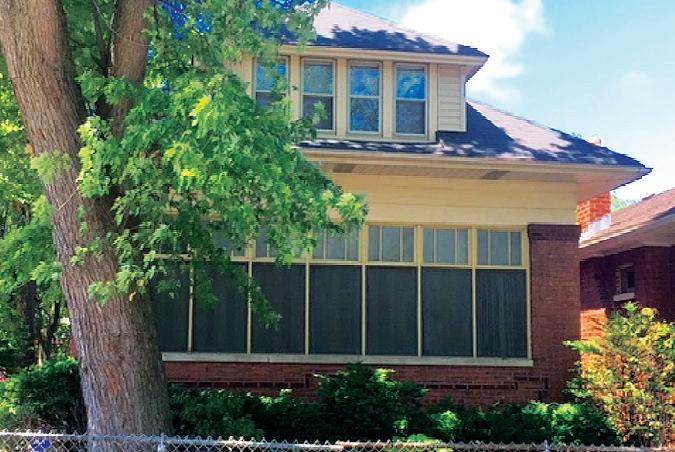
windows and said, “I walk in there and I think, ‘My God, how four people lived a full life in that little bitty space.’”
A 2015 book about the former first lady, "Michelle Obama: A Life," by Peter Slevin, said she recalled playing with her Malibu Barbie and Easy Bake Oven as a child in the small apartment and watching "The Brady Bunch" on television.
In her 2018 autobiography, “Be-
coming,” Obama wrote that “I spent much of my childhood listening to the sound of striving. It came in the form of bad music, or at least amateur music, coming up through the floorboards of my bedroom — the plink plink plink of students sitting downstairs at my great-aunt Robbie’s piano, slowly and imperfectly learning their scales.”
In 1980, Robbie Terry transferred the deed on the bungalow to Fraser
Robinson, according to the deeds filed in the basement of the Cook County Building. He died in 1991 and the title transferred to his widow, Marian Robinson. The home remained in her name until June 2020, when it was transferred to the Barack Obama Foundation. No amount was recorded.
Before the foundation took over, the bungalow had been in the Terry and Robinson family for a few months shy of 55 years, a notably long tenure, even if the house hadn’t been the place where a future first lady grew up and the then-future president also lived. The Cook County assessor estimates the value of the bungalow at $164,000.
When Marian Robinson first moved to Washington in 2009, she told People magazine it was only temporary, to help the Obamas and their two young daughters settle in. “I love those people,” she told the magazine, “but I love my own house. The White House reminds me of a museum and it’s like, how do you sleep in a museum?”
At some point in the future, the bungalow where Robinson slept for more than four decades may also be a museum.

Though Chicago is generally less pricey than comparable housing markets, we're still experiencing an affordability gap here, with estimates of the shortage lately hovering around 120,000 units. Rising rents — up roughly 6% by some measures in 2023 — are tipping more Chicagoans toward housing instability, contributing to homelessness and fueling other ills ranging from rising crime to disrupting kids' school attendance as their families seek shelter they can afford.
Everyone seems to agree this is a problem — from academics to real estate investors to community activists and beyond.
So why is the city of Chicago about to enact a new ordinance that's going to intensify the problem?
That's the big question as the City Council and the Johnson administration barrel ahead with the soon-to-be-enacted Northwest Side Housing Preservation Ordinance. It's touted as a measure to slow gentrification and protect affordable housing. Sadly, it will only stymie the kind of investment the city desperately needs to build new housing stock and upgrade older buildings.
At the heart of this ordinance is a $60,000 demolition fee, supposedly designed to discourage developers from tearing down properties in favor of new
PERSONAL VIEW
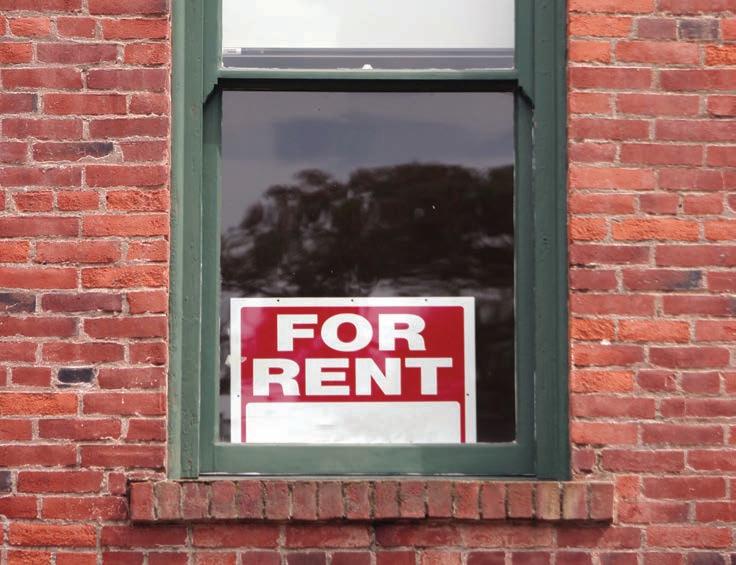
construction. Proponents argue this fee will slow the pace of gentrification and prevent displacement in communities like Logan Square, Avondale and Pilsen. But the financial burden will also fall on everyday homeowners who seek to sell their properties, not just large develop -
ers. Longtime property owners in these areas, many of whom are elderly and on fixed incomes, may find their homes are now less attractive to buyers or developers, limiting their options when they seek to sell their only significant financial asset.
Then there's this little time bomb built into the ordinance: a tenant's first right of refusal, which allows tenants to purchase the property they are renting before it can be sold to another buyer. This policy, ostensibly designed to empower tenants, can significantly delay the sale process, giving tenants four months to close without any requirement to demonstrate ahead of time that they can actually afford to buy.
One real estate industry exec, Mike Zucker, put it to Crain's Dennis Rodkin in terms we can't really improve on: "This nonsense is going to make (investors) have to sit around and wait for months before they can find out they have the right to sell a building they own — a right they've always had. If the goal was to stop investment from going into those neighborhoods, they have succeeded."
It's hard to understand how the supporters of this legislation think. They seem to believe restricting housing supply will somehow make housing more affordable. They bemoan disinvestment in their communities while making it increasingly difficult for investment to happen. They seem to regard those who have the means to help them solve the city's problems as the enemy, rather than as partners. And with that kind of thinking, we all lose.
Look at any map of Chicago measuring crime or poverty, and you’ll see a disheartening picture: The communities with less economic opportunity have more crime. This is not a new revelation. Economists, community advocates and policymakers understand that fewer opportunities in disinvested communities translates into more crime.
Aren’t we all tired of looking at this map and the way crime impacts our city? Aren’t we ready for new solutions and innovative approaches to improving public safety and fostering economic development in struggling communities?
Diverse stakeholders who have watched the same cycle of violence devastate Chicago neighborhoods came together to support legislation that incentivizes businesses that hire formerly incarcerated individuals.
Through sustained grassroots efforts, a law was enacted which triples the tax credit available for businesses that hire a formerly incarcerated employee and quintuples the ceiling for these incentives (from


Good jobs keep people off the streets and out of prisons, making communities safer and saving taxpayers huge amounts of money every year. Small businesses also benefit from a more expansive workforce, and economic activity increases in neighborhoods when formerly incarcerated individuals are hired in their communities.
If you're skeptical, small business owners aren’t. Business owners and entrepreneurs overwhelmingly support reducing barriers to employment for returning citizens.
capitalize on their new skills.
Finally, these enhanced incentives connect two groups of people that can help each other. Small businesses are being significantly affected by workforce shortages, while formerly incarcerated individuals struggle to find work, despite the fact that turnover rates are lower for employees with a record than others. Motivated business, meet motivated employee.
$1,500 to $7,500).
Sound bold? Good. Persistent problems like crime and recidivism require bold, visionary solutions.
But how can a business tax credit reduce crime? By preventing it in the first place.
One of the greatest factors in reducing recidivism is stable employment. When a returning citizen lands a steady job, it reduces their risk of re-offending in a significant way.
These enhanced tax credits also support returning citizens when they need it most. When someone is released from incarceration, they are most likely to re-offend shortly after their release. These increased incentives will be available to businesses that hire formerly incarcerated individuals upon their release, creating a powerful way for businesses to recruit formerly incarcerated individuals when they most need stable employment.
These tax credits can also help people that receive valuable training in prison
We want to make sure local businesses know about these enhanced tax credits and can take advantage of them. Indeed, if entrepreneurs need employees, and are interested in exploring these incentives, they should explore this opportunity now because funds will be limited.
We applaud policymakers for taking proactive measures to support small businesses, create opportunities for formerly incarcerated individuals, improve public safety and reduce the cost of recidivism. We also encourage politicians to enact additional innovative measures that support entrepreneurs while addressing root causes of crime and poverty.
Americans of every race and every state, Black, white, Asian American, even Jamaicans in Jamaica and anti-Trump Republicans, were energized when Kamala Harris stepped before the cameras to declare her candidacy for the presidency of the United States in advance of the Democratic National Convention.

Loida Lewis is chair of the Reginald F. Lewis Foundation, chair of the U.S. Filipinos for Good Governance and an author.
Within days, some $300 million was raised from donations, many from firsttime givers, from Americans overjoyed that they now have a young, vibrant, brilliant former prosecutor and U.S. senator running against a 78-year-old convicted felon and sexual predator.
As an Asian American woman who in 1994 succeeded my late husband, Reginald F. Lewis, as chair and CEO of TLC Beatrice International, I was met with skepticism and doubt about my abilities. However, bolstered by the team I selected to run the multinational company, we cut costs, reduced debt and increased revenues from $1.5 billion to $2.2 billion. We then sold and liquidated the company with a 30% internal rate of return for shareholders in 2002.
Today, it is taken for granted that women can be effective CEOs and run huge organizations. As my personal experience demonstrates, that was not always the case.
In the same way, Americans should not underestimate Kamala Harris’ ability to run this country as president simply because she is a woman who also happens to be Black and Asian. Other nations have elected powerful women leaders like Great Britain’s Margaret Thatcher, Germany’s Angela Merkel, Israel’s Golda Meir, India’s Indira Gandhi, and Pakistan’s Benazir Bhutto. Even the Philippines has twice elected woman presidents — Corazon Aquino and Gloria Macapagal Arroyo.
And with the addition of Minnesota Gov. Tim Walz, we have an even more potent team. Both are proven and experienced executives who will be good for the economy and our collective mental health. We’ll be able to sleep soundly at night knowing that capable people are running the country, which was not the case from 2016-2020 — witnessing Trump’s threats to pull out of NATO, his offer to buy Greenland, his prescription of horse medicine to protect against COVID-19 and then his advice to people to inject disinfectant to cure it. And the list goes on. Do we really want to go back to
that? The Harris-Walz ticket will lead us forward into the future where Americans can be proud of who they are and what their country stands for and not get dragged back into the everyday chaos that made this nation — a beacon of hope for the rest of the world — seem like a banana republic.
It is high time for the United States to elect a strong and competent woman who has served as vice president for three and a half years to the position of president.


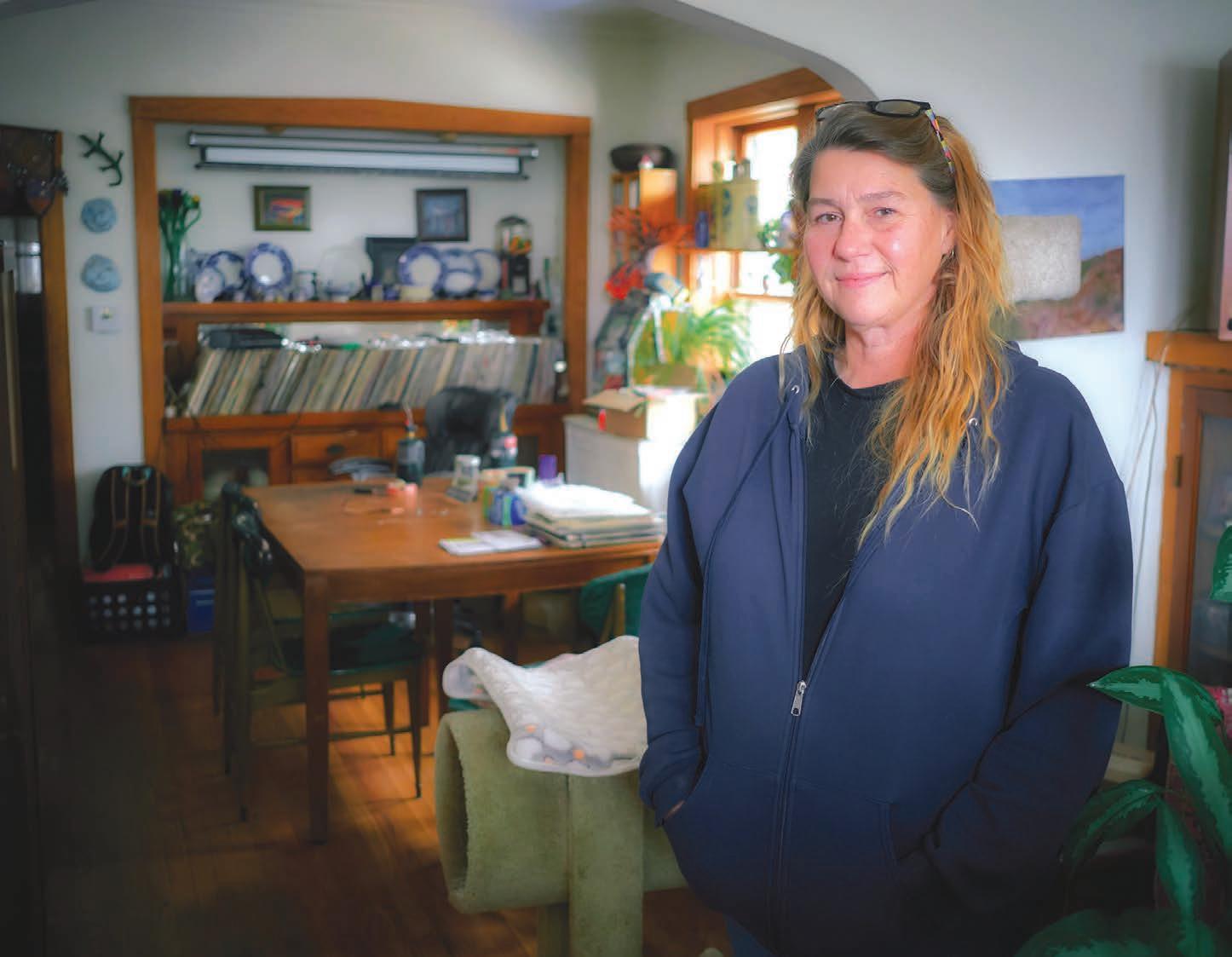
Local officials, the state of Illinois and even the Cook County Sheriff’s Office are working to provide relief for cost-burdened households I
Chicago renters keep feeling the sting of rising rents. Though rents may have stabilized in recent months, the stock of affordable rental housing is dwindling and leaving fewer options for renters with the lowest income.
“There’s not enough housing for low-income tenants,” says LaTanya Jackson Wilson, vice president of advocacy with the Shriver Center on Poverty Law. “The supply is low and the demand is high. That causes rental rates to rise.”
And rising rates put renters further behind. Consider that in 2022, the median wealth gap between homeowners and renters in the U.S. reached almost $390,000, according to the Urban Institute.
Homeowners saw significant wealth gains as home prices increased over the last decade. But as rental prices have increased faster than incomes, renters’ residual incomes after paying for housing have decreased. In 2022, the share of renters spending more
By Eric Gwinn
than 30% of their income on rent reached a record high, with about half of renters being cost burdened.
A cost-burdened household is defined as one that spends more than 30% of its income on housing. For the lowest-income renter households in Chicago, well over 80% are cost burdened. In Englewood, for example, where the median monthly income two years ago was about $2,315, that would
See RENT on Page 11
SPONSORS
“Black renters face a disproportionate share of evictions, and the eviction filing rate for adults with children was more than double the risk seen by adults living without children.”
County sheriff’s office 2023 evictions report

mean $2,050 of that would be spent on rent and related expenses.
RentCafe, an online rental listing service, reports the average rent for a 750-square-foot apartment in Chicago is $2,349. That’s out of reach for many renters in neighborhoods such as North Lawndale, where the median annual income is $33,334 and 30% of that budgeted for rent would be about $833 a month. Half of Chicagoans cannot afford the average rent of $2,350 a month, which has increased almost 50% from a decade ago.
Affordable housing in Chicago has become a major policy discussion among a diverse group of parties, from those needing a roof over their heads to public officials, developers and landlords in Chicago. Affordable rentals are a huge piece of the housing pie, and when that piece shrinks, families, neighborhoods, businesses and schools feel the effects.
Unaffordable rents can lead to tenants choosing between even lower-cost and substandard housing or becoming unhoused. But tight housing markets can affect the choices landlords make, too.
Take Lisa Cotton, who has been a landlord on Chicago's Northwest Side for 31 years. She rents seven small, tidy, unsubsidized apartments for $700 to $1,050 a month to people on fixed incomes.
“My rents are low because when you keep the rent high, you have a lot of turnover,” Cotton says. “It takes time to screen new tenants and to upgrade an empty apartment. I’m an owneroccupied landlord, so the money I would lose with revolving high rent, I might as well give tenants a discount. They really appreciate it, and it’s less headaches for me.”
But when the rental costs become too much and tenants fail to pay their landlords, the agreement between the two parties frays, which can lead the building owner to file an eviction order. In Cook County and across the nation, those who most often face eviction are Black and Latino women and families with children, the Cook County Sheriff’s Office noted in its 2023 evictions report.
Evictions add more costs for those unable to pay rent — moving expenses, child care costs, lost income — making it harder to find a new apartment. Even when a new home is found, landlords will see an eviction order on the rental applicant's personal record and refuse to rent to them. The next step might be to “sofa surf” with temporary living situations at the homes of family or friends until those options run out.
In some cases, evictions lead to homelessness.
“If we prevent people from being evicted, those people wouldn’t be homeless,” says Michelle Gilbert, legal and policy
director of the Law Center for Better Housing, a Chicago nonprofit that assists low- and moderate-income renters.
Turning point
Matthew Desmond, a Princeton University sociology professor and director of The Eviction Lab at the school, pushed the topic of evictions to the forefront in his 2016 book “Evicted: Poverty and Profit in the American City.” But even as the book was winning a Pulitzer Prize and other acclaims, tenant advocates in Chicago were already working on legal mechanisms to stop a system that usually sides with landlords.
“Matthew’s influential book really helped people think about eviction, but there was already a movement in Chicago,” Gilbert says. “There was already a dawning recognition this was an unfair system.”
Gilbert also manages the city of Chicago's Right to Counsel pilot program and helped create the Cook County Circuit Court’s Early Resolution Program, which helps residents obtain free legal aid in resolving eviction, foreclosure, debt and tax deed issues. Before the ERP’s establishment in 2021, renters and homeowners often showed up in court without legal representation and unprepared for the case against them. Services are provided through Cook County Legal Aid for Housing & Debt.
Nationally, Black and Latino tenants make up the largest share of those who are evicted, according to a 2020 study by researchers with The Eviction Lab. Cook County figures echo those findings.
“Black renters face a disproportionate share of evictions, and the eviction filing rate for adults with children was more than double the risk seen by adults living without children,” according to the 2023 evictions report by the Cook County Sheriff’s Office. Roughly half of all evictions in the county occur in majority-Black ZIP codes, while less than a quarter of the county’s population is Black.
In 2019, Cook County landlords filed an average of 1,147 eviction orders a month. When the COVID-19 pandemic shut down the city and much of the world, people lost jobs and were told to shelter at home with no income to pay rent. Lawmakers in Illinois and across the U.S. enacted eviction moratoriums and offered rental assistance to tenants while granting mortgage forbearance to landlords. When Illinois phased out its moratorium in 2021, eviction orders in Cook County had plummeted to an average of 226 per month but climbed back to nearly 1,000 in 2023.
Rising prices, inflation-eroded income and a lack of affordable residences have low-income renters feeling trapped, advocates say. And the problem is exacerbated by bad property managers who often have the upper hand by skipping repairs, main -
tenance and pest eradication.
“If a car salesman treated you like many managers treated tenants, they would have zero business,” says John Bartlett, executive director of the Metropolitan Tenants Organization. “It’s almost like they’re treating the tenant like the enemy.
“People say, ‘If you don’t want to live here, then move.’ But moving costs thousands that people don’t have. There are a lot of barriers that keep people from moving places. And things could always get worse. You don’t want to move out of the frying pan into the fire.”
In many cases, tenants have organized, finding strength in numbers to stand up for their rights. They have withheld rent, documented unhealthy and unsafe conditions, and sought out legal representation.
Housing advocates have also helped win protections for people emerging from incarceration and needing a place to live. In 2019, the Cook County Board of Commissioners passed the Just Housing Amendment to the Cook County Human Rights Ordinance, prohibiting housing discrimination based solely on an individual’s criminal record. Landlords are required to assess each rental application on a case-by-case basis.
Preserving affordable units
Chicago once was home to many single-room occupancy, or SRO, hotels and rooming houses, which catered to people who could afford only a small studio or tiny apartment. Despite a 2014 city ordinance to preserve SROs, the number has continued to decline at a faster rate than projected — particularly in Uptown, where many SROs were located, according to research by Ryan Fulgham of the Institute for Policy & Civic Engagement at the University of Illinois Chicago.
On a different front, local leaders also have moved to preserve two- to four-flat buildings that often contain an owner-occupied unit as well as rental space. In Chicago’s majority-Hispanic or -Latino and predominantly Black communities, two- to four-flat buildings make up much of the housing units in neighborhoods like Little Village, Brighton Park, New City and West Garfield Park, according to the Institute for Housing Studies at DePaul University.
In mid-September, the Chicago City Council approved a socalled anti-gentrification ordinance to discourage developers from buying such buildings, razing them and replacing them with high-priced residences that would displace longtime residents. The measure increased demolition fees to $20,000 per unit and $60,000 a building. Previously, fees were $5,000 and $15,000, respectively.
In 2021, Gov. JB Pritzker signed into law House Bill 2621, which reduces Cook County tax bills for building owners that have seven or more units if they
In 2023, the cook county Sheriff’s Office was ordered to enforce 11,988 evictions. During the cOVID pandemic, average monthly eviction orders reached a low of 226 but climbed back to nearly 1,000 in 2023. both March and August 2023 surpassed 2019’s average monthly orders.
“The rent is too damn high!” This is what many Chicago residents have been saying these days. Even though the city’s minimum wage is twice that of the federal minimum wage ($15 an hour compared to $7.24 an hour), it is still not enough. If a person works a fulltime job at $15 an hour, they will make $2,400 for the month before taxes. The median rent in Chicago for a two-bedroom unit is $1,900. What does it say when a person can work a fulltime job but not be able to afford to live in the city?

the community because rent was too high.
Over 90% of Bronzeville residents are renters, and of that group, over 50% are rent burdened, which means they are paying more than 30% of their monthly income toward rent. This is not affordable, and if they experience any monetary emergencies, then they are a step closer to eviction.
Having affordable rents does two things: 1) reduces homelessness and 2) stabilizes communities. People get to stay in their community instead of moving every five years because rents have gone up.
As a Bronzeville resident living in a community that is 85% Black, these cries of rent being too high from community members have to be heard. Many residents have seen their friends and family members move out of
Rents in Chicago increased 35% from 2018 to 2022, but we do know wages haven’t increased 20%. The eviction rate in Bronzeville is 50% higher than the city average (4.5% compared to 2.9%), which then contributes to more Black people
possibly leaving the city of Chicago.
The Black population in Chicago has dropped from 52% of the overall population 30 years ago to 28% of the population now. This has been a result of the destruction of public housing that was the catalyst for gentrification in many historic Black communities. If we truly want an equitable society, we need rent rent stabilization legislation that makes rent increases equitable for all. Right now, corporate landlords can price-gouge our community to death with no regulation from our local governments. This is what the government should be, the regulatory agency that protects its citizens from corporate greed. In order for Chicago to truly be a world-class city, we have to change the paradigm. It is not how well it treats its affluent residents but how well it treats the most vulnerable citizens. This is what will make Chicago world-class.
When someone says “fair housing,” we think of people trying to obtain housing. But preventing eviction is as much about fair housing as is seeking admission.
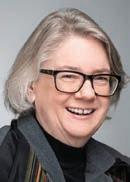
In 2019, my organization, the Law Center for Better Housing, released the Chicago Eviction Data Portal, which examined a decade of Chicago eviction records to highlight patterns in evictions. The data showed that eviction overwhelmingly affects communities of color on the South and West sides of Chicago, with South Shore having an eviction rate nearly three times the city average. Repeated studies find that eviction disproportionally impacts Black people, especially Black women with children.
Michelle Gilbert is the legal and policy director for the Law Center for Better Housing.
moratoria because they needed to be paid rent, we did not disagree. Instead, we said they needed a new tool in their toolbox — not just eviction, which leaves housing providers with a paper judgment and an empty apartment, but rather rental assistance. Rental assistance not only preserves tenancies — it actually puts money back in the landlord’s pocket, which they can turn around and spend in their communities.
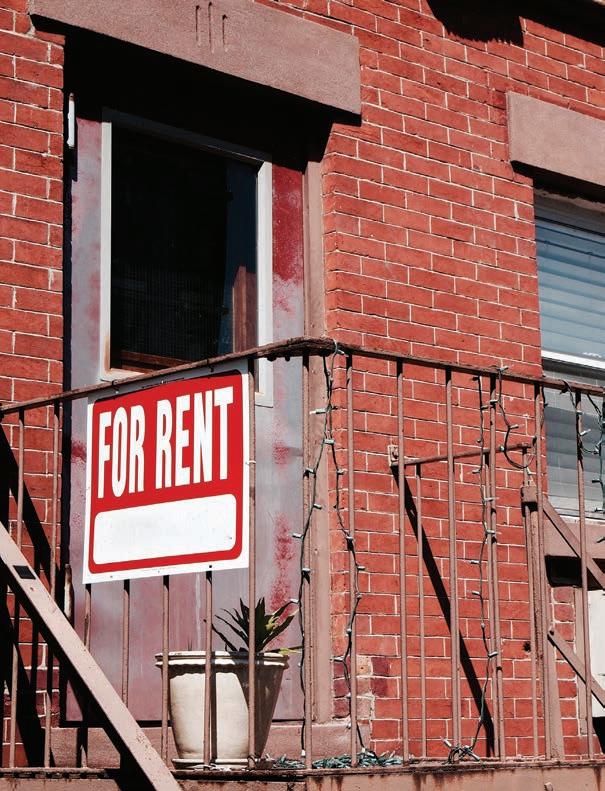
Because eviction happens largely to traditionally disempowered communities, eviction defense has not often been at the top of policy agendas. The pandemic, which brought eviction to the doorstep of many communities, changed that thinking and brought unprecedented attention to eviction prevention, including a moratorium on evictions so that people could shelter at home.
When landlords opposed the
We were not the only people who felt this way: Gov. JB Pritzker and the General Assembly agreed that pandemic-era rental assistance had been so successful in promoting housing stability that in this year’s budget, they appropriated $75 million for courtbased rental assistance, recognizing that investing in housing stability is more costeffective than rehousing people who have become homeless.
The second critical set of pandemic-era changes arose under the leadership of the Cook County courts, the Cook County Board, the Chicago Department of Housing, and the Chicago Bar Foundation. Cook County Legal Aid for Housing & Debt, a new legal aid consortium, was formed to provide advice and negotiation assistance for both unrepresented
tenants and landlords. This effort implemented changes in the practices of eviction court so that tenants have time to consult an attorney and prepare defenses before going to trial. We appreciate that Cook County Board President Toni Preckwinkle and the county board are working to continue CCLAHD.
After tenants have completed CCLAHD’s services, for more complicated cases or particularly vulnerable tenants, Chicago created the Right to Counsel Pilot Project, which my organization leads. Preliminary data by independent evaluators shows that around 92% of RTC clients seeking to avoid a formal eviction order were able to achieve that goal. RTC staff, from partners Law Center for Better Housing, Legal Aid Chicago and CARPLS, are not magicians. We win cases because tenants have defenses that they are not able to present on their own. We appreciate that Mayor Brandon Johnson has introduced an ordinance to make right to counsel permanent in Chicago — joining 17 cities, two counties, and five states that have enacted permanent right to counsel legislation.
In my 34 years as a legal aid attorney, I have talked to too many people on the verge of eviction and homelessness — people who helped with a family member’s funeral expenses, who did not
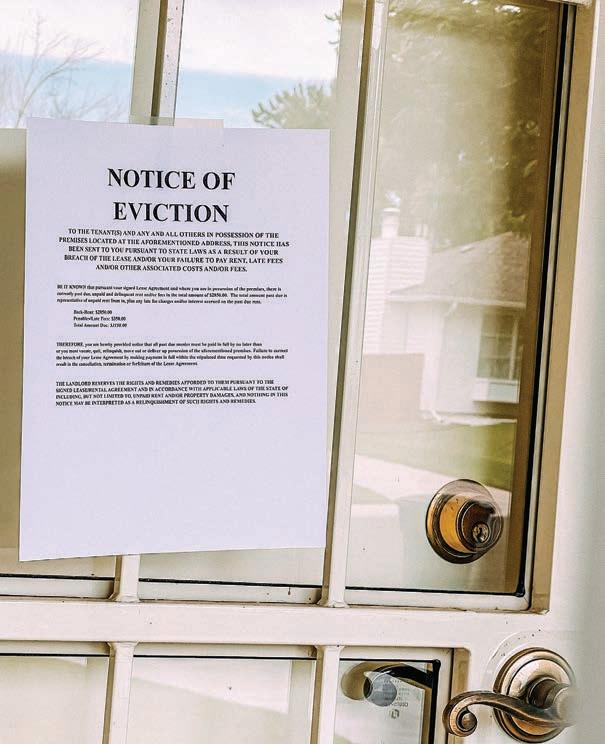
Because eviction happens largely to traditionally disempowered communities, eviction defense has not often been at the top of policy agendas.
have paid maternity leave, or who withheld rent after living with troubling housing conditions. Preventing their evictions has been my life’s work and my small way to try to achieve a more
racially just society. Maybe, with systemic changes like rental assistance and right to counsel, we can make eviction more rare and move toward a society that embraces justice for all.
Numerous considerations, both financial and other, have to be taken into account when deciding whether to rent or buy your next house or residence.

Renting versus buying can also be a determining factor if the housing prospects in your price range are scant or it is difficult to find anything in the exact neighborhood or section of town you desire.
Generational Trends" report, the median down payment among homebuyers of all ages was 13%, and some loan programs allow buyers to make down payments that are much lower, such as 3%, 1% or zero.
For many would-be homeowners, the down payment is all that's holding them back. Renting could be an equal if not better avenue, depending on financial conditions (interest rates, housing market status, etc.) and non-financial conditions (area of town, family and friends proximity, etc.).
Renting considerations
Jamie
Hermann is the mortgage sales manager and senior vice president for Old National Bank.
If finances are tight and interest rates are high, renting may be the best option to continue to save to buy a house down the road. Buying “too much house” can put you in a precarious position if you’re meeting your mortgage payment with little to spare and monthly surprise bills (medical, insurance, home fixes, etc.) put you over the top in terms of your planned bills and expenses.
Purchasing considerations
The down payment amount is typically the biggest consideration for a potential homebuyer. A survey from NerdWallet shows that 37% of nonhomeowners said that their lack of a down payment was preventing them from buying a home. But there are opportunities to get into a house without spending years saving up for a down payment:
1. Reconsider your down payment needs.
It’s a common assumption that you have to bring a down payment of 20% of the purchase price in order to buy a home, but that is not necessarily true. According to the 2023 National Association of Realtors' "Home Buyers and Sellers

2. Talk to a lender who offers, and is knowledgeable about, down payment assistance programs.
In a lot of cases, potential homebuyers come in and sit down with me and we talk through the process of qualifying for a mortgage. Many banks offer an in-house down payment assistance program for lowto moderate-income homebuyers in certain communities.
3. Get prequalified for a mortgage.
This provides prospective buyers a good idea of how much home they can afford and how much a lender may loan them.
4. Learn as much as you can about the process.
Many down payment assistance programs require participants to take a homebuyer education course in order to qualify. Take the course as early as possible in the
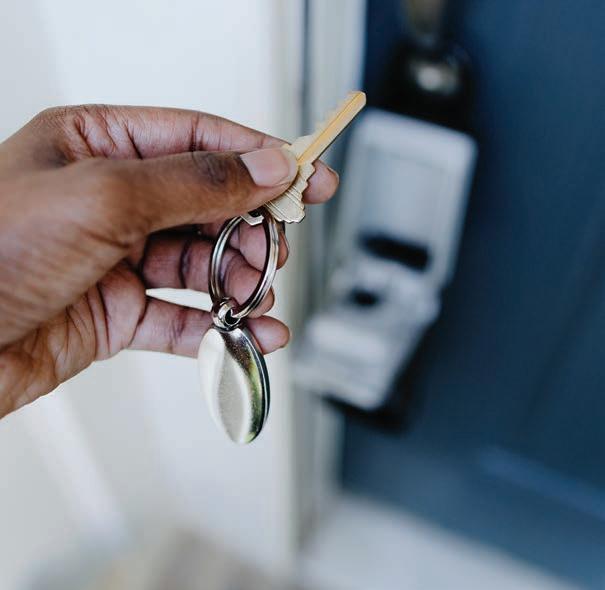
process so you can benefit from all the knowledge it will provide.
5. Consider various options for assistance.
Some down payment assistance
programs will provide 3% of the purchase price, up to $10,000, for qualifying homebuyers. Those who qualify and purchase in select areas can receive up to $15,000 toward the purchase price.

HOUSEHOLD MEDIAN NET WORTH
$210,000 WHITE
$40,500 MEXICAN (U.S.-BORN)
$24,000 PUERTO RICAN
$6,000 MEXICAN (FOREIGN-BORN)
$0 BLACK



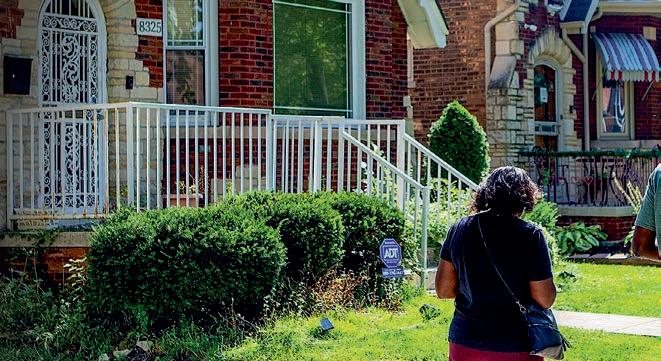


By Eric Gwinn
For more than a century, Chicago’s iconic two- to four-flat homes have been an important part of affordable housing in the city. About 40,000 of the structures sprung up in every neighborhood from the late 1890s to about 1920.
They were built with renters and upward mobility in mind. New immigrants saved enough money to buy a two- or three-flat (four-flats came later) and lived on one floor while renting out the rest of the home. The rent took care of the mortgage, allowing the homeowner to save up enough money to buy a detached single-family home, living the American dream. For generations, the cycle of success continued. Today these homes remain a crucial source of unsubsidized rental housing for residents with low income.
Lisa Cotton owns and lives in a
two-flat on the Northwest Side, in an area that has a high share of lower-income renters living in high-cost units. Since 1993 she has offered low rents for the seven units in her building and nearby coach house. Nearly all of her tenants are on fixed incomes.
She likes being a landlord in the building where she lives, and tenants feel like family. But “repair costs on two buildings that are over 100 years old is constant,” she says. “I always have a huge list of things to do. I once had to do rat eradication on my birthday. I have to buy seven stoves and seven refrigerators and once had to make $20,000 in repairs to my porches.”
Cotton wrestles with raising rents because of the expenses. “I have retirees, independently employed people and a family with a kid," she says. "I don’t want anyone to suffer.” So she has taken on a job outside the home to keep things running.
Meanwhile, other landlords have countered inflation and rising property taxes by raising rents. In turn, tenants and community groups statewide are pushing the state to reintroduce rent controls at the municipal level. Cotton understands the desire for rent control and is determined to hold the line against raising her rents. But she is convinced that if rent control were approved, other landlords would jack up their rents significantly before it went into effect in a bid to lock in a cushion against future expenses. That, she predicts, would eliminate even more affordable housing.
Two- to four-unit buildings are Chicago’s most common type of rental housing, according to a study by the Institute for Housing Studies at DePaul University. They account for more than 32% of the city’s housing supply.
But in the last decade, Chicago has lost many of these types of
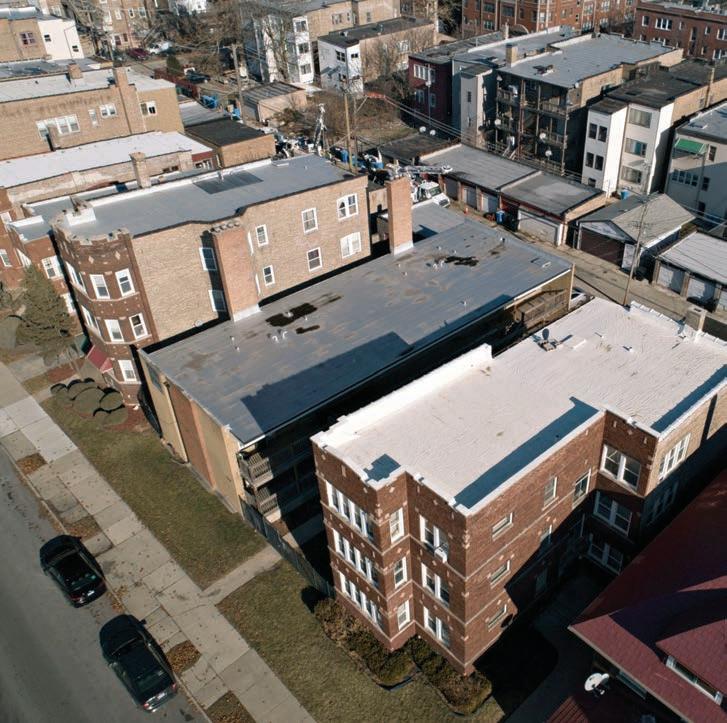


creased, the study found. Areas with lower income and a history of disinvestment saw the structures deteriorate and demolished without replacement. Those neighborhoods also lost population, as people left when the supply of affordable housing shrunk.
Citywide, over 73% of rental units in two- to four-flats are occupied by a person of color, a separate study from the institute shows, and the majority of two- to four-flats are owned by a Black or Latino head of household.
Aldermen have sought to protect two- to four-flats and other homes in some rapidly gentrifying areas home to Hispanic and Latino residents. The Northwest Preservation Ordinance, approved in September by the City Council, makes it more costly for developers to buy and destroy older two- to four-flats in parts of Hermosa, Logan Square, Avondale, West Town and Humboldt Park. The intent is to preserve affordable housing so that longtime residents aren’t forced out as higher-income people move in.
The so-called anti-gentrification ordinance increased demolition fees to $60,000 for two-flats and $20,000 per unit for multi-unit residences. That is up from $15,000 per building and $5,000 per unit. Advocates for affordable housing hope the measure can be extended to other community areas.
Cotton approves of the move and wants to see more city efforts to protect and expand affordable housing.
“Please,” she says, “don’t make it harder for people who are trying to keep folks off the streets.”
provide affordable apartments and make substantial renovations.
But the number of existing and proposed affordable units is under threat, the Institute for Housing Studies warns.
Rising expenses and increasing property taxes are pushing landlords to raise rents, making more units unaffordable for renters with low incomes. Rising costs affect small-scale landlords, who own a large percentage of unsubsidized affordable housing in Chicago. Owners of two- to four-flats often have fewer renters to shoulder a rent increase. Or, they might be tempted to sell, which could lead to investors raising rents beyond the reach of people in the neighborhood.
Meanwhile, growing the number of new affordable properties locally and nationwide has been tough.
“Builders of affordable housing are facing a lot of headwinds,” said Christine Serlin, editor of Affordable Home Financing magazine, published by housing market researcher Zonda. Soaring development and operating costs in 2023 pushed down construction of affordable developments across the U.S. by 8% among developers the magazine surveyed.
Serlin says raising money to get projects started has become more complex for developers, who are now using more financing resources than usual to try to bring down construction costs. They’re combining block grants with philanthropy dollars, low-income tax credits, environmental funding and other reductions to move the projects forward.
In Bronzeville, a 10-story apartment building on the corner of 43rd Street and Prairie Avenue is nearing completion. It's part of a two-building, $81 million project next to the 43rd Street Chicago Transit Authority Green Line station that will have 99 studio, one-, two- and three-bedroom apartments, with 51 of them affordable. Funding came from multiple sources: $10 million in tax-increment financing, $6 million in multifamily loan funds and $3.9 million in low-income housing tax credits.
“It takes a lot of hard work and perseverance,” Serlin says. In November, Zonda will host its annual AHF Live convention in Chicago, bringing together affordable housing stakeholders, service providers, attorneys, accountants and government agencies to share lessons and case studies.
“It is really rewarding to see that affordable housing is becoming more mainstream on the national level,” Serlin says.
Despite legislative efforts and policy initiatives, though, af-
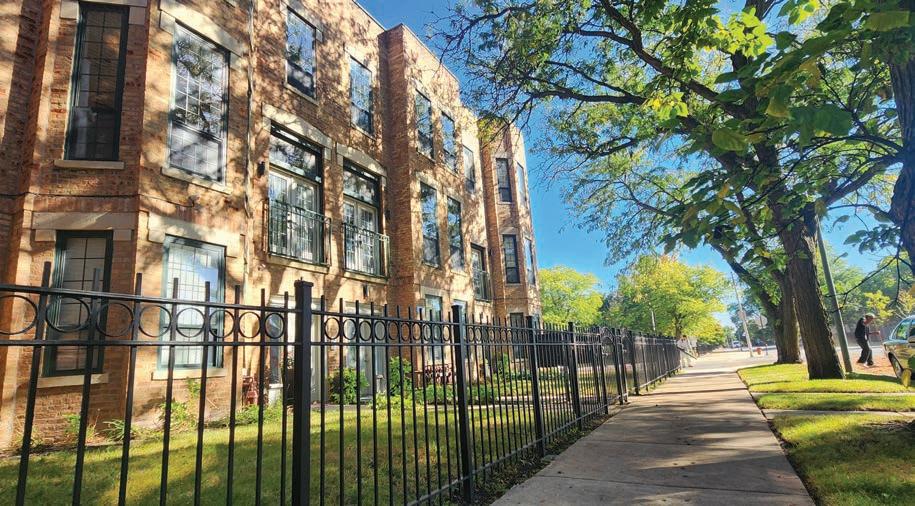
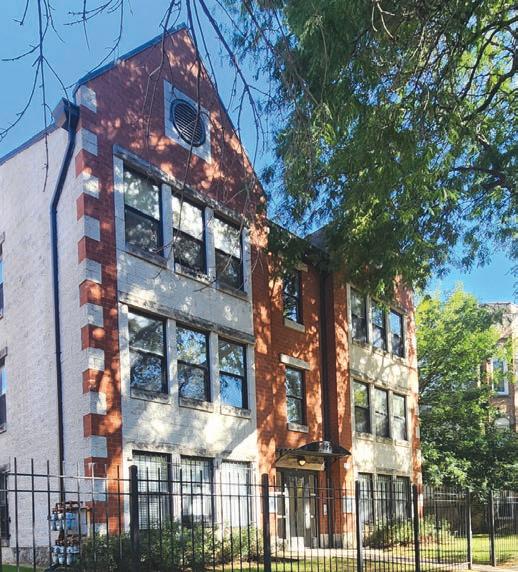
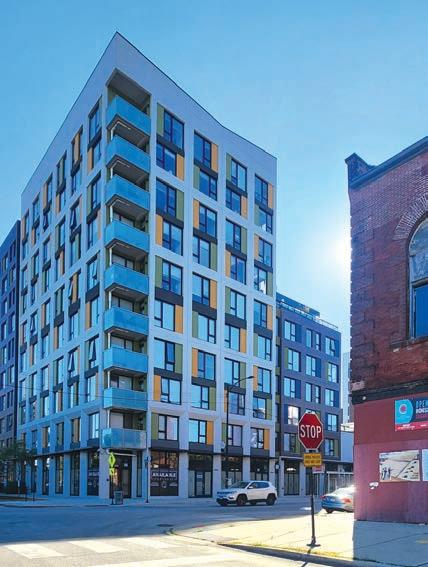

fordable rents still remain out of reach for low-income renters.
“People think that those who are living in poverty are not working, but generally they have multiple jobs,” says Wilson of the Shriver Center.
A state-funded, court-based rental assistance program recently opened for tenants who are struggling to pay rent and their landlords. It's one piece of Illinois' Early Resolution Program to deter evictions.
Rental assistance programs became common during the COVID pandemic, aiding millions of renters who struggled to pay their rent due to job loss or sickness.
The office of Cook County Sheriff Tom Dart created a social services unit and protocols to guide tenants and landlords through the eviction process.
Dart says a team from the sheriff’s office visits a tenant weeks before their eviction date to offer
services that range from finding new housing and schools for children to transportation and assistance for seniors.
“We tried to make it a more thoughtful system,” Dart says.
“We want to both help take some of the trauma out of the eviction process for tenants and get the property back quicker to landlords, who were oftentimes a mom-and-pop with just this one building and hadn’t received rent in a year.”
To place your listing, contact Suzanne Janik at (313) 446-0455 or email sjanik@crain.com .www.chicagobusiness.com/classi eds
CAREER OPPORTUNITIES
MltplopeningsavailforfollowingposinWarrenville,IL&unanticipatedclientlocationsthroughout the Analyzeuserreqs&cnvrttheenduser'sbizProcessesreqsinto deliverablesmeetingtheprojobjctvs.DsgnanalyticssysusingSAPBWonHANA,SAPIntegrated Planning,SAPABAP&SAPBPCw/Consolidation.Relocation&15%ofdomestictrvlarepossibleto anunanticipatedclientsitethroughouttheU.S.Offeredsalary:$148,949.Toapply:Plse-mailresume& posappliedforto:HR,TalentAcquisitionTeamathrusa@teklink.comormailto Suite215,4320WinfieldRoad,Warrenville,IL
CAREER OPPORTUNITIES
seeks inChicago,ILtodevelopweb applicationsaspartofthepatientfacingdevelopmentteam.Telecommutingpermitted.Applyat www.jobpostingtoday.comRef#57083.
CAREER OPPORTUNITIES
CounterpartyCreditRiskAnalytics(DataControls&Integrity)isafunctionwithinGBAMRisk.The group'sprimaryfunctionistoensureadequatecontrolsandprocessesexisttovalidatethefirm'sTraded ProductsactivityforthepurposesofCreditandCapital(Basel)calculations.
CCRAARCTICDataManagementisresponsiblefordatavalidationoftheTradedProductsrepository (ARCTIC)utilizedinBaselRWAcapitalcalculations.TheBaselcontrolframeworkrequiresaccurate representationofthebank'sBooksandRecordsinallRWAcapitalcalculationsperformed.Inaddition, giventhatARCTICisalsothedatasourceforanumberofCreditandCollateralManagementprocesses, theteamisalsoinvolvedinmanagingtheserelatedwork-streams.
FullJobDescriptionandrequirementsat jobs.chicagobusiness.com
CAREER
TheMarketingDepartmentofArnold&PorterisseekingadynamicandorganizedBusiness Development(BD)Specialist.ThisrolemaybelocatedintheBoston,Chicago,NewYork,or Washington,DCoffice.TheBDSpecialistwillsupportthetransactionalpracticegroupinitiatives.The BDSpecialistprovidessupportforawiderangeofbusinessdevelopmentactivities.Successinthisrole willdependuponyourabilitytocollaborateeffectivelywithteammembers(includingseekinghelpand askingquestionswhenneeded),developfamiliaritywiththefirm’svariousresourcesandsystems,hone yourinstinctstoanticipatequestionsandpotentialissues,independentlymanageyourtimeand consistently“gotheextramile”withoutbeingasked.FullJobDescriptionandrequirementsat jobs.chicagobusiness.com
OneofthelargestandmostaccomplishedlawfirmsintheMidwest,isseekingabusinesslitigation attorneytojoinourChicago,ILoffice.Thepreferredcandidatewillbeanexperiencedandversatile attorney,withaclient-centricphilosophy,andwhohasdemonstratedanabilitytocompeteandprosper incomplexenvironments.Weareseekingawell-rounded,dynamic,highlymotivatedlawyer,whohas demonstratedanabilitytocompeteandprosperinhighlycompetitive andcomplexenvironmentswith significantclientcontact.Strongwriting,communicationandinterpersonalskillsarerequired.Flexible workarrangements,includingremoteworkoptions,areavailable. FullJobDescriptionandrequirementsat jobs.chicagobusiness.com

Several investors led by Jason Weingarten, co-founder of recruiting startup Yello, will acquire his part of the restaurant company
By Brandon Dupré
Nick Kokonas, co-owner of The Alinea Group, the team behind Michelin-starred restaurant Alinea, announced the sale of his ownership stake in the restaurant group in a Sept. 30 post on X, formerly known as Twitter.
Kokonas, who co-owns The Alinea Group with chef Grant Achatz, said he sold to an investor group led by Chicagoan Jason Weingarten, co-founder of recruiting startup Yello. Kokonas will “remain a minority, passive investor,” according to the post.
“I look forward to seeing Grant and Jason build on the amazing organization and experiences TAG has in place,” he wrote on X. “Personally, I'm excited to work on new ventures and stay as uncom-
fortable as I dare. That usually leads to the best results.”
Kokonas declined to comment further on the transaction, and terms of the deal were not disclosed.
Alinea, the flagship of the Chicago restaurant group, is one of only two restaurants in the city to have three Michelin stars. The other is Smyth in the West Loop.
“(Twenty) years of innovation in hospitality, book publishing, and reservation software — along with making 1M+ diners happy and full of wonder — has me feeling very thankful for the many team members who helped make all of that happen,” Kokonas wrote in the post.
He is also the architect behind Tock, a reservations company launched in 2014 with former Google engineer Brian Fitzpatrick.
Website-hosting service Squarespace bought Tock in 2021 for more than $400 million.
Achatz and Kokonas founded Alinea in 2005, which put the restaurant group on the map. The Alinea Group has since opened five other establishments, according to its website, including Roister and Next.
The purchase is investor Weingarten’s latest move into the restaurant and food industry, following the launch of meal-kit company Entreé and recently opened Oliver’s in the South Loop, which is led by chef Alex Carnovale — an alum of fine-dining restaurant The French Laundry — and is inspired by the vibes of old Hollywood, “where supper clubs were the epitome of elegance and timeless charm,” according to the eatery’s website.
Derivesvaluesforcompaniesusingdiscountedcash flowandrelativevaluationmethods.Analyzesthe company'sproducts/services,financialstatements,industry,endmarkets,andoutlooktodetermine appropriatevaluationassumptions.Documentsandreportsresultsandassumptionswithsupporting rationaletocreditofficers,auditors,regulators,andotherstakeholders.
FullJobDescriptionandrequirementsat jobs.chicagobusiness.com
From to p ta lent to to p em pl oyers, Crain’s Career Center is the next step in
By Rachel Herzog
A New York investor best known in Chicago as an office landlord has picked up an apartment highrise near Millennium Park.
AmTrust Realty has purchased Parkline Chicago, a 26-story, 213unit tower at 60 E. Randolph St. in the East Loop, the commercial real estate firm announced. The sale price wasn’t disclosed and didn’t appear in Cook County property records this afternoon.
Parkline is the first apartment building the firm has bought in Chicago, though AmTrust President Jonathan Bennett said through a spokesman that the firm is growing its national apartment portfolio. While the past two years’ interest rate hikes slowed transaction volume and tempered sale prices for commercial properties of all stripes, the apartment building sector
didn’t see the level of distress that other sectors — particularly office properties — did.
“AmTrust has had a significant office footprint in the Chicago Loop for years, and as it continues its resurgence, we’re eager to continue investing in the city,” Bennett said in a statement.
Bennett pointed to Google’s overhaul of the Thompson Center blocks away as a factor that will help drive demand for residential space downtown, bringing “an influx of tech professionals to the East Loop over the next few years” as little new supply is expected to hit the market due to high interest rates tying up large development projects.
A venture including developers Tom Roszak and Dan Moceri put Parkline Chicago on the market in 2021, just a few months after the property’s leasing office opened. Roszak didn’t respond to requests for comment.
The venture that owned the building received an $80 million mortgage on the property in November 2021, property records show.
The apartment tower is about 93% occupied, according to a marketing brochure from real estate brokerage CBRE.
CBRE’s John Jaeger, Justin Puppi and Jason Zyck brokered the deal.
AmTrust’s other holdings in Chicago include the Illinois Center, which consists of two buildings at 111 E. Wacker Drive and 233 N. Michigan Ave., as well as office buildings at 33 N. Dearborn St., 1 E. Wacker Drive and 33 W. Monroe St. The firm is also working on a proposal to convert a portion of the office building at 135 S. LaSalle St. into about 400 apartments as part of the city’s LaSalle Street Reimagined initiative.
MichaelSilver, Deerfield

MichaelSilver proudly announces the promotion of Kristy McElroy, CPA to Partner of the Firm. With more than 20 years of accounting experience, Kristy has demonstrated exceptional leadership across various Firm initiatives. As a key leader in the Firm’s Tax Department, she brings her expertise to highnet-worth individuals, flow-through entities, and businesses across multiple industries, including real estate, professional services, automobile dealerships, and private equity.

HNTB, Chicago
Grace Madden has joined HNTB as a project director, supporting the firm’s transit fleet and facilities practice. She brings more than 15 years of project management and mechanical engineering experience, including leading the delivery of complex and innovative solutions for fleet replacements and updates for railway companies and transportation agencies across the globe. In her new role, she will collaborate with clients on programs related to rail vehicles, systems and related facilities.
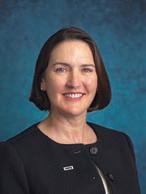
Wintrust Bank N.A., Rosemont

Jennifer O’Neill, Senior Vice President for Wintrust Commercial Banking, was promoted to Team Lead of the Government, Non-Profit, Healthcare Banking Group at Wintrust Bank. Jennifer joined Wintrust in April 2022. She brings a volume of experience coming from Fifth Third Bank and MB Financial Bank and sits on the boards of Chicago Shakespeare Theater and the Alliance of Merger & Acquisition Advisors. Jennifer is a graduate of Loyola University Chicago with a bachelor’s degree in finance.

The Walsh Group, Chicago

The Walsh Group congratulates Andy Kocher on his promotion to Vice President of Federal Healthcare. Andy’s market expertise, long-standing customer relationships and collaborative strategies have provided proven leadership that guides our federal healthcare teams. His collection of work spans 22 years at The Walsh Group, featuring recent notable projects at the Louisville VA Medical Center, the VA Dallas LongTerm Spinal Cord Injury Center and the VA Long Beach Mental Health Inpatient Center.

First Bank Chicago, Chicago
First Bank Chicago, one of the five largest privately held banks in Chicago, is pleased to announce Merima Klaric has been promoted to Vice President/AML/CFT Officer. In this new role, Merima is responsible for ensuring a high level of compliance with AML/CFT related laws and regulations, internal policies and procedures, and Federal/State regulatory expectations. Merima is a Certified Anti-Money Laundering Specialist (CAMS) and joined the Bank in 2020.

The Walsh Group, Chicago

The Walsh Group congratulates Eric Radloff on his promotion to Vice President of Private Healthcare. Eric’s leadership in healthcare construction and his commitment to precision, innovation and customer service are a driving force for our practice. He has led a collection of significant projects in the Chicago area, including the recently completed University of Chicago Northwest Indiana Microhospital & Cancer Center and the Alexian Brothers Medical Center Surgery Renovation and Expansion.


Wintrust Financial Corporation, Rosemont
Wintrust Financial Corp., a financial services holding company based in Rosemont, Illinois, with more than 200 locations across Illinois, Wisconsin, Michigan, Indiana, and Florida is pleased to announce two promotions. Michael Kahne was promoted to Senior Vice President, Relationship Manager, Business Banking at Old Plank Trail Community Bank, N.A. Michael joined Wintrust in 2017. Paul Drago was promoted to Senior Vice President, Marketing at Wintrust Financial Corporation. Paul joined Wintrust in 2019.



City of Hope Cancer Center, Zion Meng Gan, M.D., joined City of Hope Cancer Center in August 2024 as a radiation oncologist, where she treats patients with various oncologic diseases including breast, prostate and lung cancers. Boardcertified by the American Board of Radiology, Dr. Gan completed her radiation oncology residency at the University of California, Irvine. She has multiple publications to her name and is a member of the American Society for Radiation Oncology. Visit cityofhope.org for more.

Timothy M. Carrigan, PhD, RN, FACHE, has been named the Regional Chief Nursing Officer (CNO) for Loyola Medicine’s Illinois and Indiana markets, which includes Loyola Medicine and St. Joseph Health System. With more than 20 years of healthcare leadership experience, he has demonstrated exemplary leadership in nursing excellence and patient care. Carrigan will be responsible for overseeing nursing practices across five hospitals, with a focus on promoting excellence and compassionate care.

Phillips Lytle LLP, Chicago

Olivia Crooks advises for-profit and tax-exempt organizations on various federal and state tax matters. She has experience in tax planning for multinational businesses, including technical research on international tax matters and global restructuring, tax diligence in M&A deals, and providing tax advice in connection with M&A transactions.
Phillips Lytle LLP, Chicago

Ginsberg Jacobs LLC, Chicago

City of Hope Cancer Center, Zion
Shen Li, M.D., recently joined City of Hope Cancer Center as a surgical oncologist, where he specializes in advanced and minimally invasive techniques to treat a range of cancers, including complex gastrointestinal. Boardcertified in general surgery, he completed his residency at Beth Israel Deaconess Medical Center, followed by fellowships in research at Massachusetts General Hospital in Boston and surgical oncology at the University of Chicago Medical Center. Visit cityofhope.org for more.

Louis Bernstein has joined Ginsberg Jacobs as a Partner to chair and expand its litigation practice. Lou has over 40 years of experience representing Fortune 500 companies, prominent Chicago families and many of Chicago’s top real estate entrepreneurs in litigation throughout the United States in numerous federal, state and appellate courts, including the United States Supreme Court. James Trail has joined Ginsberg Jacobs as a Partner in the firm’s Litigation group. His practice focuses on real estate-related matters, fraudulent conduct, contractual disputes and commercial workouts. James is also adept at resolving disputes before and after trial, through alternative dispute resolution methods and in postjudgment appellate proceedings.

Carl Johnson’s experience in litigation includes navigating all aspects of a dispute. From pre-litigation investigations, depositions and discovery to trial and settlement strategies, he has managed complex civil litigation in breach of contract, class action, commercial real estate, copyright and IP protection, fraud, employment law, telehealth and unfair competition matters. Carl has been named to Best Lawyers: Ones to Watch in America® and National Black Lawyers Top 40 Under 40 in Illinois.
United Way of Metro Chicago, Chicago

Michael Best, Chicago
City of Hope Cancer Center,
Kevin Zhang, M.D., recently joined City of Hope Cancer Center as a medical oncologist, specializing in the treatment of kidney, bladder, prostate and testicular cancers. Dr. Zhang is board certified and completed his residency at Indiana University School of Medicine followed by a clinical fellowship at Beth Israel Deaconess Medical Center in Boston. He is published in multiple peer-reviewed publications and has spoken at conferences across the United States. Visit cityofhope.org for more.

Michael Best is proud to announce the election of Chicago-based Labor & Employment attorneys Angela Lam & Michael Sokolowski to the firm’s partnership. Lam represents and counsels employers regarding compliance with everchanging employment laws for an increasingly multi-state workforce. She has also successfully litigated employment cases in federal and state courts in Illinois and California, in arbitration, and before administrative agencies nationwide. Sokolowski is a trusted advisor to clients in some of the most challenging labor and employment issues. He has successfully litigated cases across the country. His counseling work focuses on identifying practical, businessfocused solutions for clients.


United Way of Metro Chicago welcomes Elizabeth Lach as Chief Development Officer. Lach brings more than 25 years of fundraising leadership experience, most recently at University of Chicago, Northwestern University and Chicago Children’s Museum. Lach now leads United Way’s fundraising and donor engagement strategy. With nearly 20 years of experience in the nonprofit, philanthropic and public sectors, Jackie Rosa returns to United Way of Metro Chicago as Vice President of Strategic Initiatives. Most recently serving as Deputy Mayor of Community Engagement, Office of the Mayor for the City of Chicago, Rosa now leads growth and strategy for United Way’s public policy and programming efforts, plus the operations of 211 Metro Chicago.

Curi RMB Capital, Chicago
Curi RMB Capital welcomes Jenn Shepard, CFA®, CPWA®, CFP®, as a Senior Wealth Advisor in our Chicago North Shore office. Jenn brings more than 30 years of experience in wealth management and financial planning and a passion for helping clients balance their life’s mission with their investment and wealth management needs. She is a Chartered Financial Analyst, Certified Private Wealth Advisor, and Certified Financial Planner professional, and she has a bachelor’s degree from Colgate University.

weaknesses and invest in the strengths of Chicago.”
Transforming the vacancyplagued Loop as an improved destination for food, culture and music came in as a close second to police among survey respondents. But that option was different from a less-popular choice of subsidizing office-to-residential conversions as the city is trying to do today under the LaSalle Street Reimagined initiative.
Using the hypothetical $1 billion to help address underfunded pension obligations for the city and state also ranked high on the list for survey respondents.
BILLION-DOLLAR QUESTION: If we choose not to spend $1.0B on a Bears or Sox stadium, where would you look to invest instead (choose 3):
Reimagine Loop (as food/culture/music destination) Address pension underfunding Schools
Affordable Housing
Innovation districts or incubators Roads
Reimagine Michigan Avenue (ULI’s bridge to Oak Street plan)
Subsidized office-to-multifamily conversions
Improve or expand O’Hare Airport
Other
Source: the Real Estate Center at DePaul University and Urban Land Institute Chicago District Council
tate taxes, I wouldn’t spend the $1 billion,” Reschke said in the statement.
Other findings from the midyear sentiment survey:
The biggest macroeconomic concern for respondents is the “current political climate,” outpacing financial concerns related to inflation rates, interest rates and the potential for a recession. Safety and taxes — particularly property taxes — are among the greatest short- and long-term concerns about investing in and doing business in Chicago, respondents said.
Some developers suggested their own ideas, too. Capri Investment Group founder and Executive Chairman Quintin Primo, whose partnership with Chicago developer Mike Reschke of Prime Group helped land a deal with Google to transform the James R. Thompson Center, said he’d use the money toward building “cover decks” over expressways in the city.
From Page 3
“This is about preserving housing in our neighborhoods by giving people the opportunity to purchase their homes,” Ald. Carlos Ramirez-Rosa, 35th, told Crain’s. One of seven City Council members who sponsored legislation that supporters call the Northwest Side Housing Preservation Ordinance, Ramirez-Rosa said “the vast majority of naturally occurring affordable housing in the city is found in two- to four-flat buildings, and we don’t want to lose them.”
One would stretch between Jackson and Lake streets in the West Loop — an idea floated more than a decade ago by developer Steve Fifield to create a West Loop
work together to keep their housing intact and even extend its lifespan as affordable housing.
Opponents, including people in the real estate business, counter that it unfairly inserts a new layer of government control over private business transactions.
“This nonsense is going to make (investors) have to sit around and wait for months before they find out they have the right to sell a building they own — a right they’ve always had,” said Mike Zucker, managing partner of Peak Properties. “If the goal was to stop investment from going into those neighborhoods, they have succeeded.”
It’s too soon to say whether tenants, community trusts and others will take up the opportunity to purchase, resulting in the preservation of two- and three-flats as affordable housing.
The ordinance is an update and expansion of an earlier antigentrification protection plan for the area around the popular 606 Trail that was set to sunset. Ramirez-Rosa and other supporters of the new ordinance, which the council passed with a 44-3 vote, say the right of first refusal will encourage renters to
engineering
2023: $100 million from Ross Stevens for Chicago Booth's Ph.D. program 2024: $100 million from an anonymous donor to support free speech
The university said the donation will support “UChicago’s leadership on the principles and practice of free expression” and the advancement of a new initiative called the University of Chicago Forum for Free Inquiry and Expression, which was launched
The right of first refusal is one piece of the ordinance that, among other things, also quadruples the fee for demolishing older multifamily housing in the neighborhoods to make way for new houses and bars construction of new houses on blocks dominated by multifamily buildings.
Higher demolition fees — $60,000
by President Paul Alivisatos in 2023 to buttress open discourse on campus.
“This remarkable gift will underpin an enduring Chicago Forum for Free Inquiry and Expression and will allow us to significantly deepen the understanding and practices here at the University of Chicago,” Alivisatos said in a statement. “Equally important, it will enable us to expand this important work on a much larger scale.”
Turbulent year
The large donation to support free expression comes after a fraught and turbulent year on
version of Millennium Park — and another atop the Dan Ryan Expressway between 31st and 35th streets near Guaranteed Rate Field.
The latter “would cause connectivity certainly on the South Side, reconnecting a market that was divided perhaps unfairly by the expressway,” Primo said in a statement on the report from DePaul and ULI.
for a two-flat, up from $15,000, and $20,000 per unit in larger buildings, up from $5,000 — may simply be tacked on to the price of the replacement homes sold to buyers in the million-dollar range.
Meanwhile, it’s the first-refusal provisions that shift power from building owners to their tenants. The ordinance stipulates that the owners of multi-unit rental buildings in the affected neighborhoods must tell tenants and the city’s Housing Department that they plan to sell at least 60 days before putting the property on the market. If a potential buyer signs a contract, the owner has 30 days to tell the tenants, who then have another 90 days to form a tenant union and match the potential buyer’s offer.
The building owner is expressly prohibited from asking the tenants or the tenant union they form whether they can get financing for the deal.
This strikes some real estate professionals as particularly unfair to the seller. If selling one’s own home, “you would never take an offer from somebody who hadn’t provided a pre-approval letter or displayed some other ability to purchase the property,” said Luke Blahnik, an @properties
college campuses, which saw large student demonstrations and tent encampments protesting the Israeli invasion and ongoing war in Gaza. The gift also comes amid larger ongoing discussions about the limits of free speech, especially on online platforms such as X.
While school leaders were criticized for comments and responses following the Oct. 7 Hamas attacks, Alivisatos and UChicago largely stayed out of the public fray.
Alivisatos did not issue a school statement or offer public comment following the attacks — a standstill tactic that has
Reschke suggested a different way that $1 billion might be put to work to help spark growth in the city: “I would lower real es-
Christie’s International agent who has been involved in transactions with teardown properties in the affected zone.
The tenants can also pass their right of first refusal along. Under the ordinance, they’re allowed to “assign those rights to any party, whether private or governmental.”
Ramirez-Rosa said this provision is intended “for large buildings in particular,” because it might be harder and inordinately more complex for renters in 25-unit buildings, for example, to muster the purchase money than for those in a two-flat. “We foresee a future where community lenders and nonprofit organizations may want to partner with a tenant association in order to secure that housing as permanently affordable housing,” he said.
If the tenants or their selected buyer complete the purchase of the building, covenants must be put on the property that keep it as affordable housing for 30 years.
Thus, the tenants aren’t going to be doing an end-run around the sellers and grabbing profits for themselves.
It’s too soon to say whether tenants, community trusts and others will take up the opportunity to purchase, resulting in the preservation of two- and three-
landed other leaders in hot water — but instead leaned on the school’s practice of institutional neutrality, often referred to as the "Chicago Principles."
Drafted in 2014 under the leadership of former President Robert Zimmer, the principles maintain that it is not the role of the university “to attempt to shield individuals from ideas and opinions they find unwelcome, disagreeable or even deeply offensive.” The principles are a continuation of earlier school doctrines such as the 1967 Kalven Report, which stressed institutional neutrality. Other schools have publicly
More than 55% of respondents as of midway through the year were bearish or concerned about the state of the market for the rest of 2024. But 60% were bullish or optimistic about the market when looking 24 to 36 months ahead.
Fewer people believe the bidask spread between buyers and sellers for commercial properties would widen this year. Of those who believe the spread would narrow, 62% think it will be the result of seller capitulation.
flats as affordable housing and reducing displacement in fastchanging neighborhoods. In Woodlawn, where the right of first refusal has been in place for four years, no purchases have been made in that vein.
A difference in Woodlawn is that gentrification is moving slowly, both because the Obama Center isn’t yet the attraction it might become and because there’s less pressure on that South Side neighborhood than in the North Side’s hot zone.
The North Side version might test the appeal of a first-refusal policy.
“It’s all well intentioned," said Miguel Chacon, a Compass agent whose deals are often in the gentrification hot spots. “But I think it’s over-reaching” with the “incredible amount of power” it gives tenants.
The extra time and uncertainty that the first-refusal provisions add to the sale process, he and Zucker said, is likely to encourage developers to make their investments in other neighborhoods outside the protected 6 square miles.
Chacon and Blahnik both believe that’s intentional. “To the extent they feel they’re hurting the developers,” Chacon said, “to them, that’s a win.”
adopted similar policies in the wake of the Oct. 7 Hamas attacks. Harvard University announced a change that echoes the Chicago Principles, so too did Northwestern University, whose President Michael Schill mentioned the policy by name.
"Some of you who have followed recent discussions about free expression may see strong influence of the Chicago Principles, and you would not be mistaken," Schill said in a message to the Northwestern community Oct. 12 explaining why he did not issue an official university statement following the Oct. 7 Hamas attacks.
In the first
analysis of its kind, Northwestern Medicine researchers estimated the effect the Federal Assault Weapons ban, enacted in 1994, could have had if it didn’t expire in 2004
By Jon Asplund
As many as 38 mass shootings could have been prevented in the United States had the Federal Assault Weapons Ban not ended in 2004, according to a Northwestern Medicine study.
The study, published Sept. 20 in the journal JMIR Public Health & Surveillance, is the first to consider how many mass shootings the ban would have prevented, the health system said in a press release.
The federal ban on certain military-style automatic weapons and high-capacity magazines was enacted in 1994 and ended in 2004, during which time Northwestern estimates it prevented five public mass shootings.
Northwestern University Feinberg School of Medicine professor Lori Post, senior author of the study, estimated the effect the ban could have had in the subsequent 18 years. The study covered the years 2005 to 2022.
There have been numerous attempts in Congress to reinstate the federal ban since 2004.
The study was published a day after the end of a federal court trial challenging the constitutionality of Illinois' own ban on assault-style weapons and large-capacity magazines.
Illinois lawmakers passed the ban, formally called the Protect Illinois Communities Act, in January 2023 in response to the Highland Park Fourth of July parade shooting in 2022. The trial in the Southern District of Illinois involved four cases, each with multiple plaintiffs who argued the law violates the Second Amendment right to keep and bear arms.
The judge in that case did not indicate when a final ruling would be issued.
Northwestern's Post said in the release most research has only focused on whether the number of mass-shooting deaths declined during the federal ban. She was lead
From Page 1
its growth at O’Hare and has grown faster in Chicago than across the airline this year, but remains below pre-pandemic traffic levels.
United is operating about 550 flights a day from O’Hare, says Mark Weithofer, managing director of domestic planning. That’s fewer than before, but by design. The airline has been retiring regional jets in favor of larger planes that carry more passengers, and O’Hare had the highest percentage of regional jets.
It will fly 300 mainline flights a day from O’Hare this fall, the highest level since 2007, says Matt Stevens, vice president of interna-

author of one such study in 2021.
“It is intuitive that shooters with rapid-firing, machine-gunlike military weapons with largecapacity magazines can quickly fire and kill or injure dozens of people in just seconds compared to shooters with pistols, revolvers, rifles or shotguns,” Post, professor of emergency medicine and medical social sciences at Feinberg, said in the release. “However, there are only two investigations into whether a prohibition of assault weapons prevents mass shootings from even occurring. It certainly does.”
Anonymous benefactor
Funding for the study, “Public Mass Shootings: Counterfactual Trend Analysis of the Federal Assault Weapons Ban,” was provided by an anonymous foundation donor, the release said.
Researchers demonstrated that would-be mass shooters did not substitute other weapons for assault weapons and large-capacity maga-
tional network. The airline is using bigger aircraft on service to large markets such as New York, Atlanta and Dallas.
By having more seats on each flight, United is able to carry more passengers, particularly premium flyers. That results in spreading the cost of the flight across more passengers, which allows the airline to offer lower ticket prices. Having more premium passengers, in particular, further subsidizes leisure travelers, making United more competitive with discounters such as Southwest and Spirit.
One example is the Florida market, where United now says it has gone from third place to first in the amount of capacity from Chicago in the past decade. It has doubled
zines, arguing that those types of mass shootings did not change during the assault weapons ban. They also modeled a potential decrease in shootings had the ban been in effect through 2022.
In the study, scientists defined a public mass shooting as an event in a public place where there are at least four people killed by a firearm, not including the perpetrator.
They examined all 184 public mass shootings in the U.S. between 1966 and 2022, which included the Highland Park shooting. The FBI began tracking such incidents in 1966.
Using linear regression on a moving average of mass shootings per year, they looked at the trends before, during and after the ban was put in place. Scientists also controlled for the national homicide rate.
The model provided two hypothetical scenarios — if the ban were never imposed and if the ban remained in place — to estimate
the number of seats since then, including a 30% increase since before the pandemic.
The airline will add another 2% to Florida in the first quarter next year, including a 20% increase to Fort Lauderdale, where it will use its largest aircraft, the Boeing 777, which is typically used for overseas flights.
Part of United’s strategy has been to increase flying from what it calls its mid-continent hubs in Chicago, Denver and Houston.
The Department of Aviation welcomed United’s growth, noting that the airline has steadily added international and leisure destinations, as well as business routes such as O’Hare to LaGuardia.
As a pilot shortage has eased, United and its regional-airline partners are set to boost the fre-
as many as 38 shootings could have been prevented.
Post noted in the release that, since the federal ban has not been in place, simply reinstating it would not eliminate all the assault weapons purchased over the last two decades.
She said a future ban would need to include a buyback program or exclude a “grandfather” clause, unlike the last ban.
“We won’t be able to stop all mass shootings — especially those committed by a jilted husband or a fired employee who reacts and kills people they know with whatever gun they have,” Post said in the release. “However, a ban on assault weapons and large-capacity magazines would surely thwart mass shootings committed by those mass killers who spend weeks to months planning a mass shooting or those who want to be famous and have fantasies, such as dressing up in a pseudo-commando costume, which includes an assault rifle.”
quency of flights available in the fourth quarter to small markets it serves from O’Hare, such as Peoria, Moline, and Green Bay and Appleton, Wis. Many small markets were slower to recover the amount of service they had prior to the pandemic as airlines struggled to ramp up quickly in the post-COVID travel resurgence.
“We’re focused on the fundamentals as we grow our hometown hub — building comprehensive flight schedules and easy connections to the most popular international and domestic travel destinations while also offering our customers industry-leading amenities, both in the air and on the ground,” Patrick Quayle, United’s senior vice president for global network planning and alliances, said in a statement.
CUSTOMER SERVICE (877) 812-1590
Reprints (212) 210-0707
















